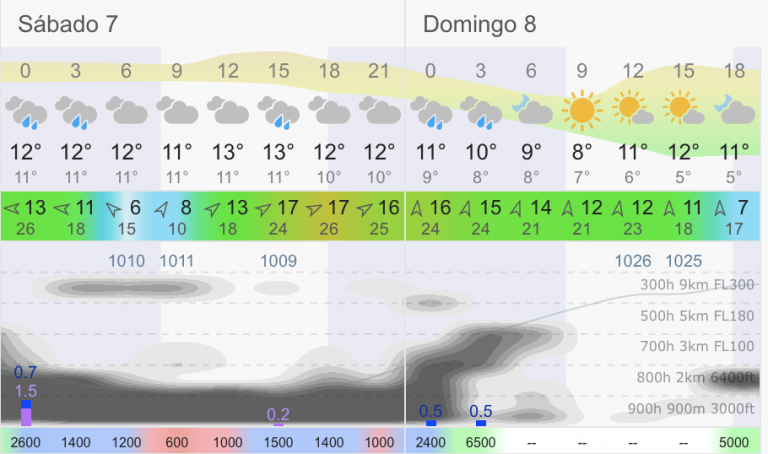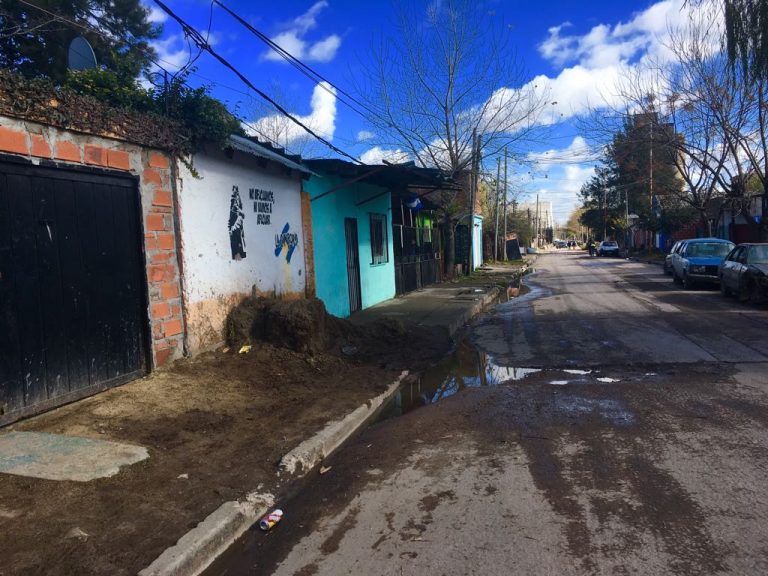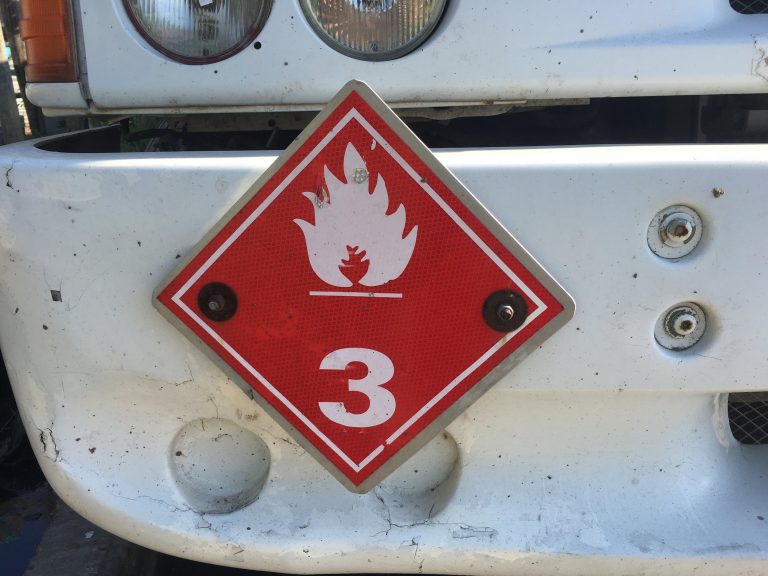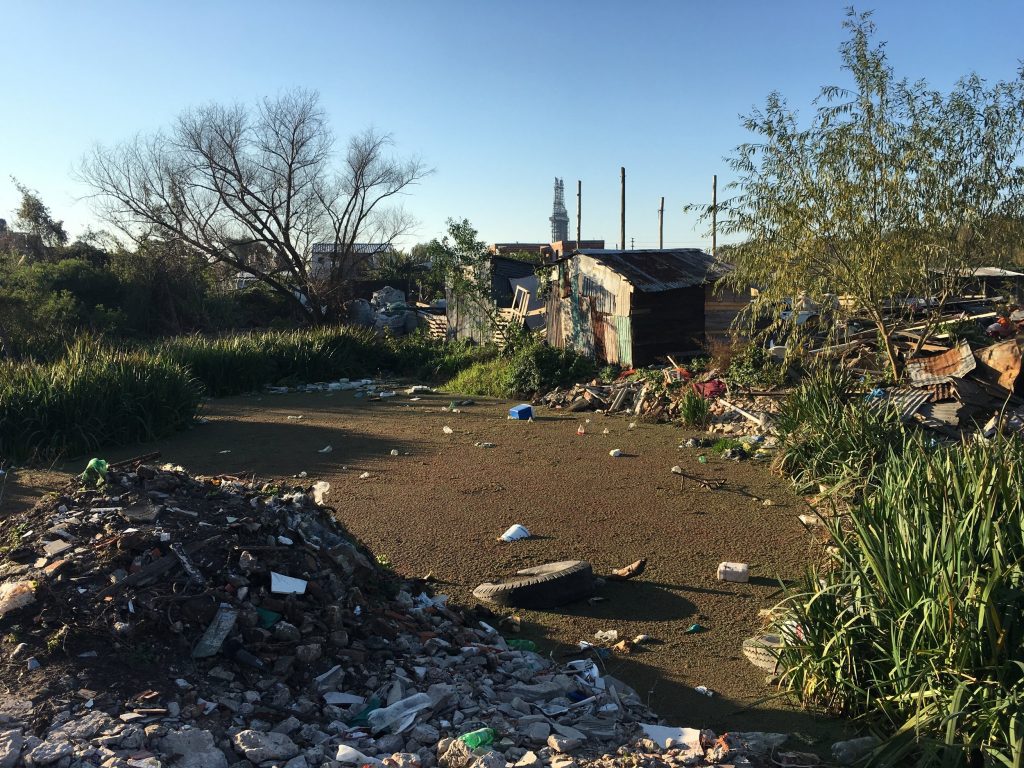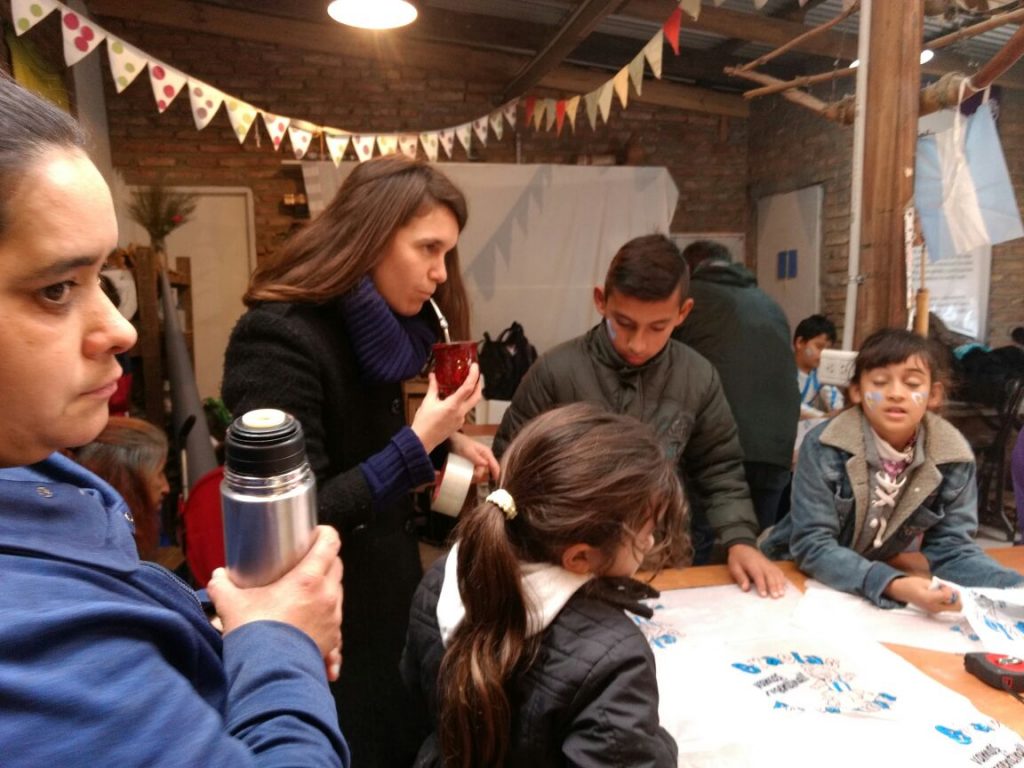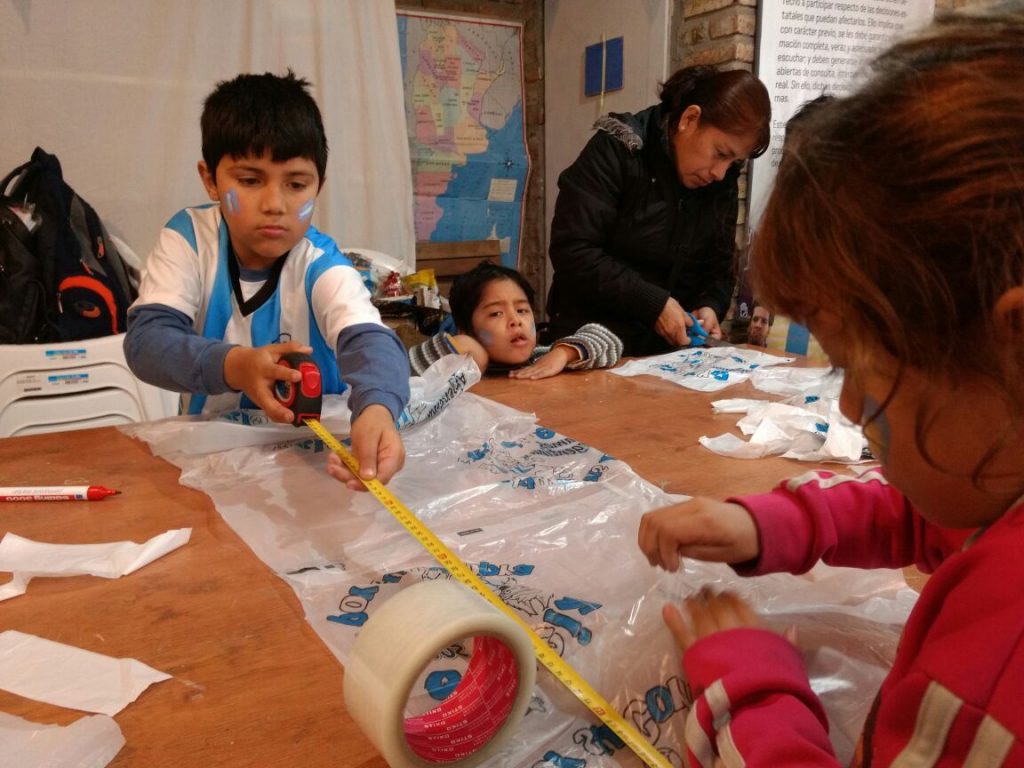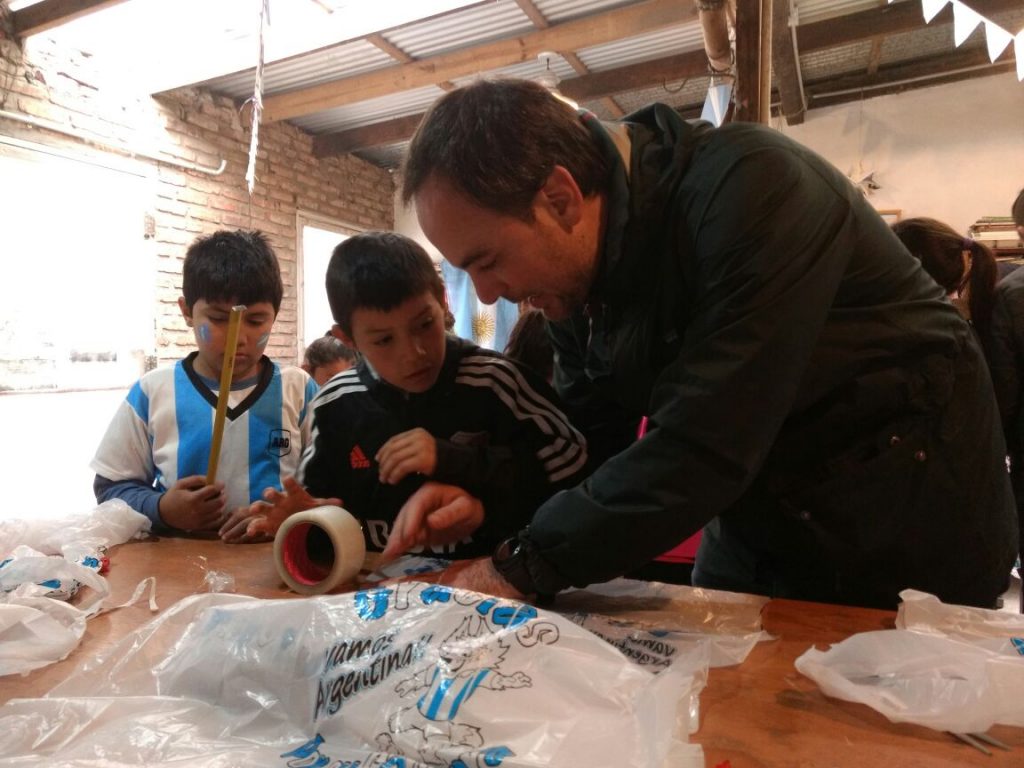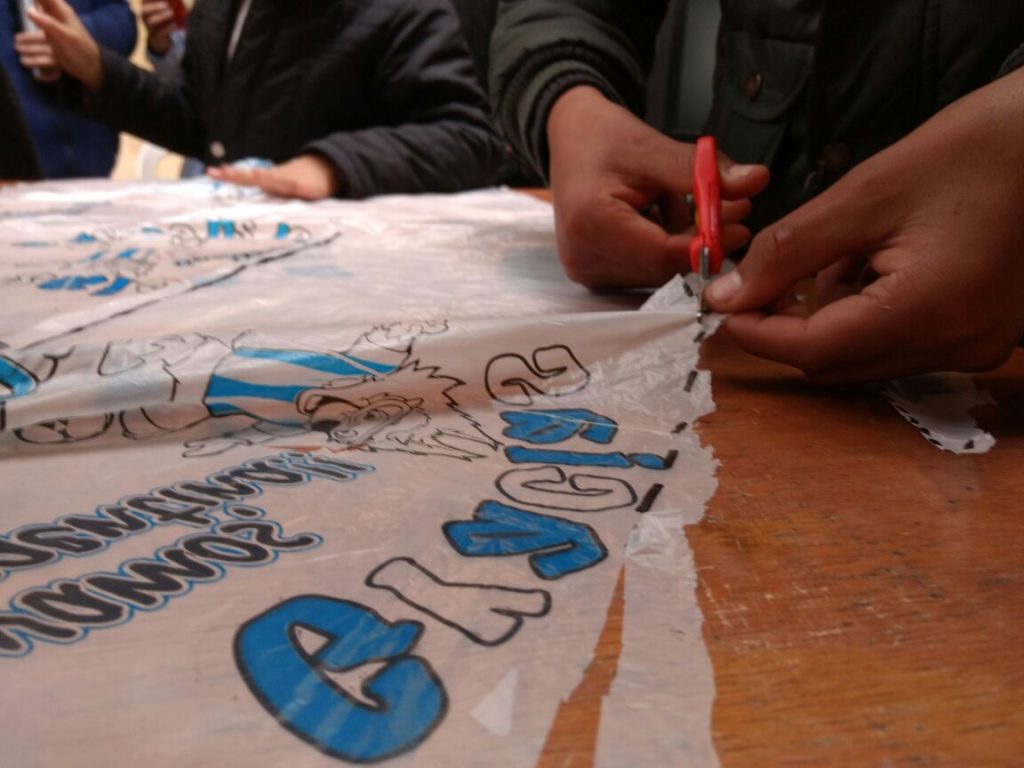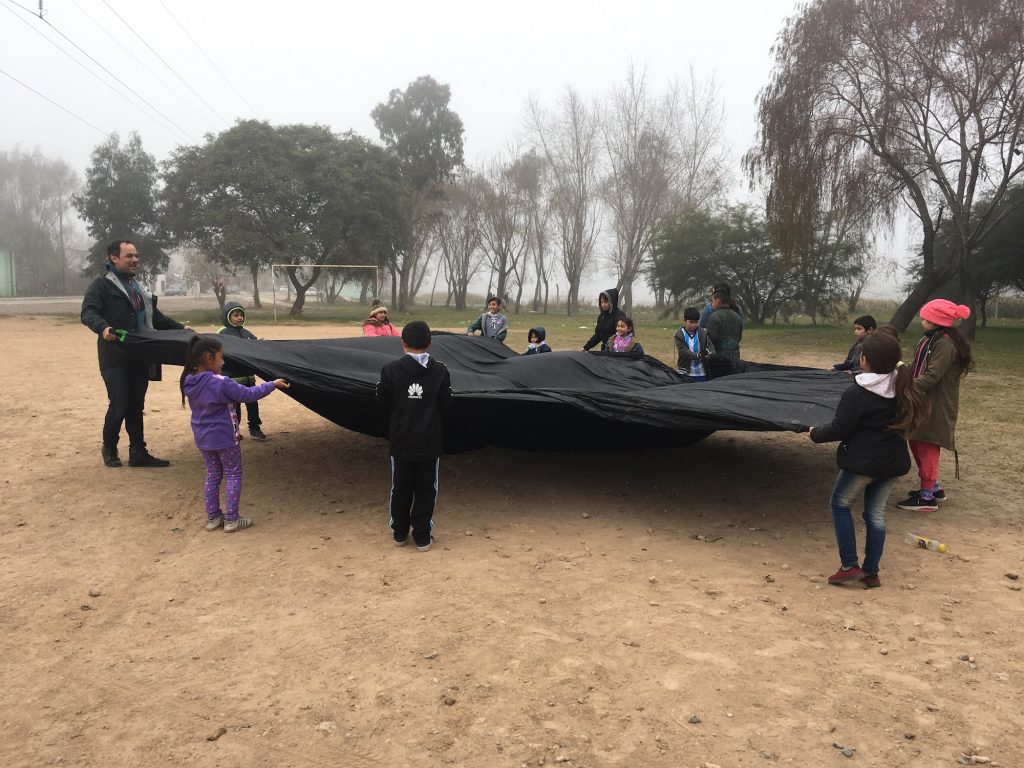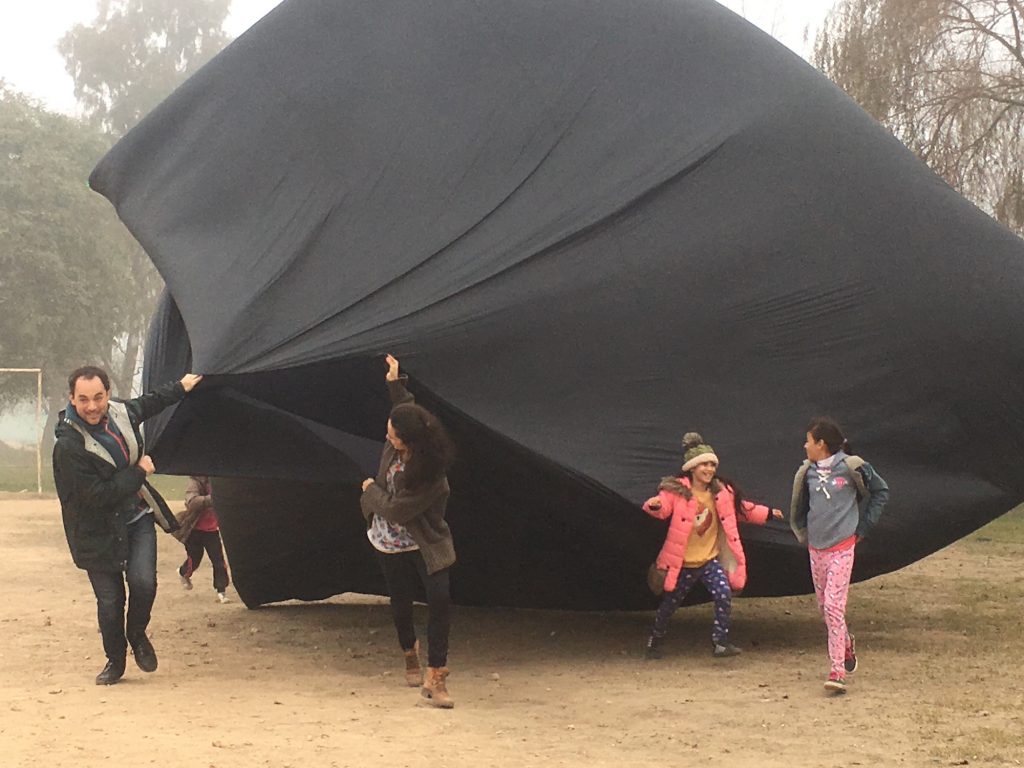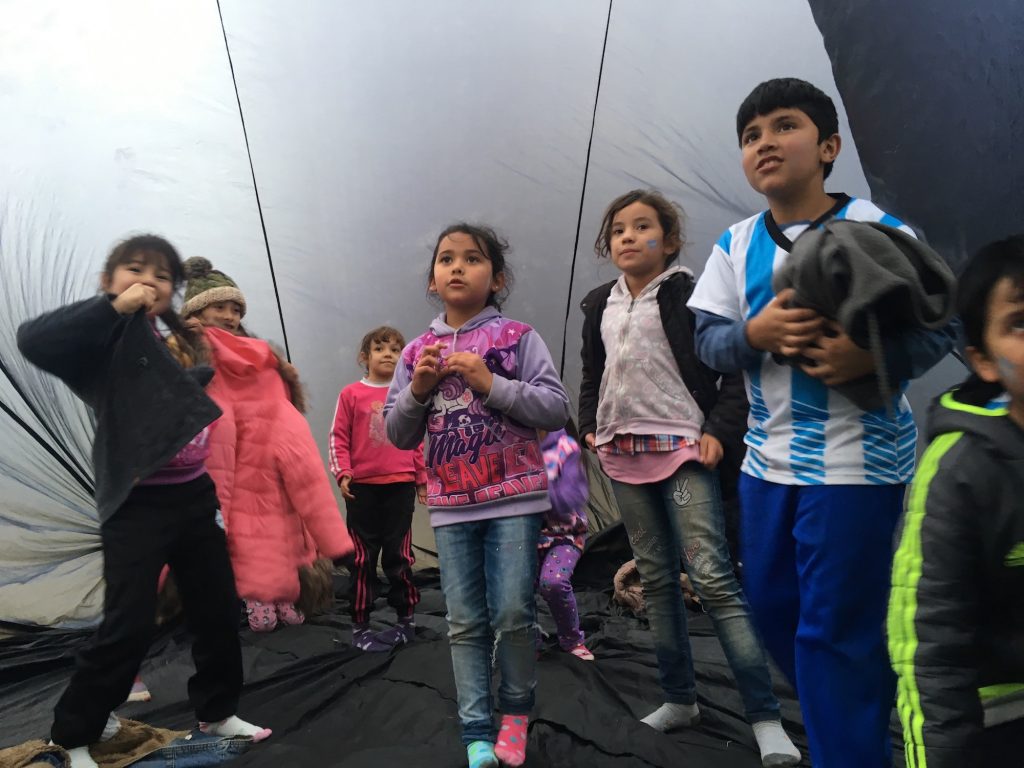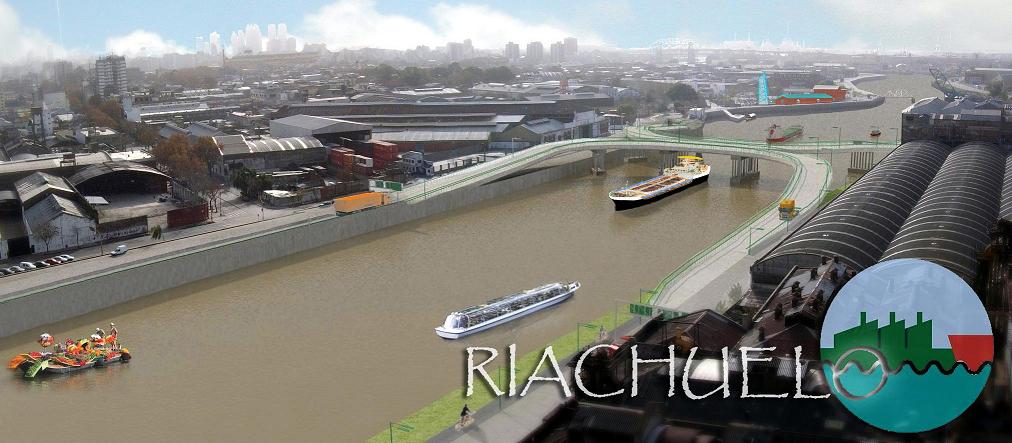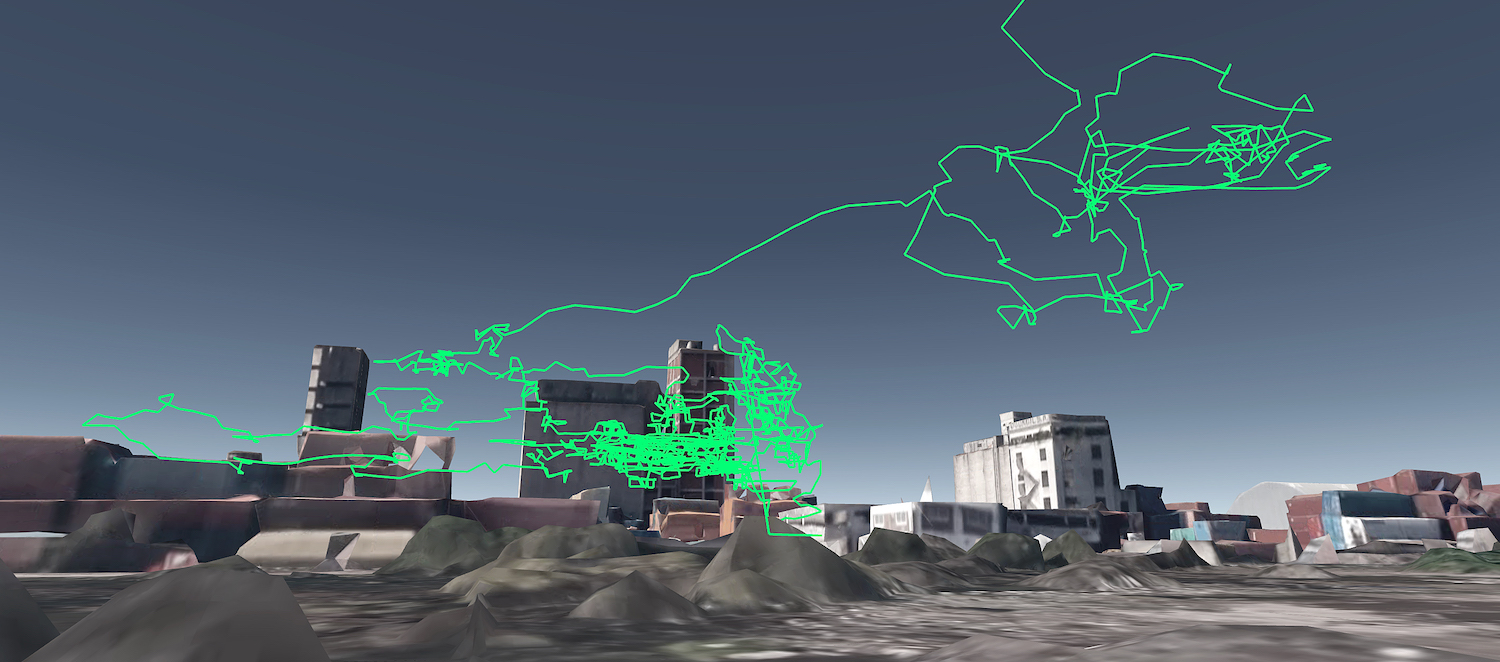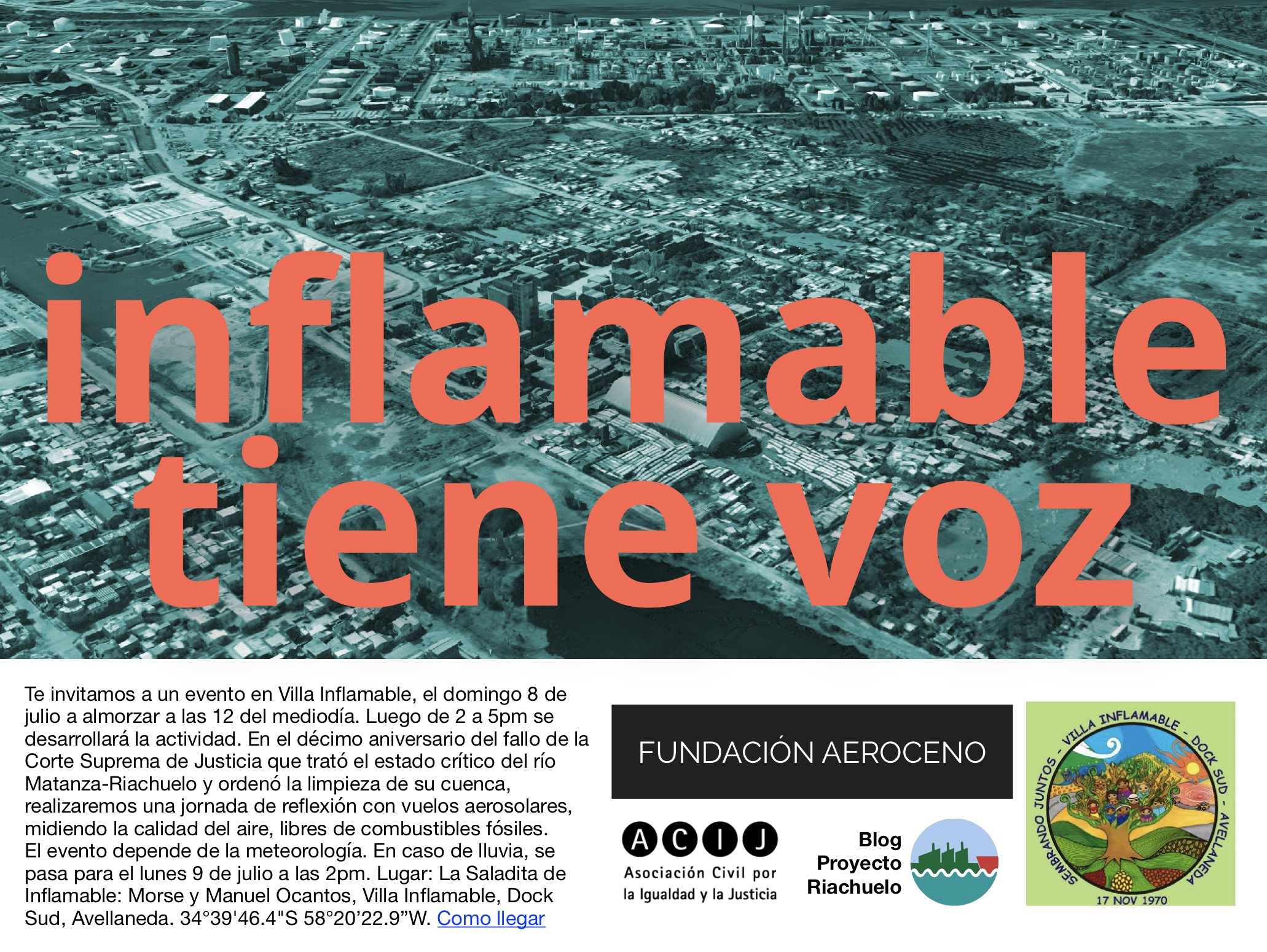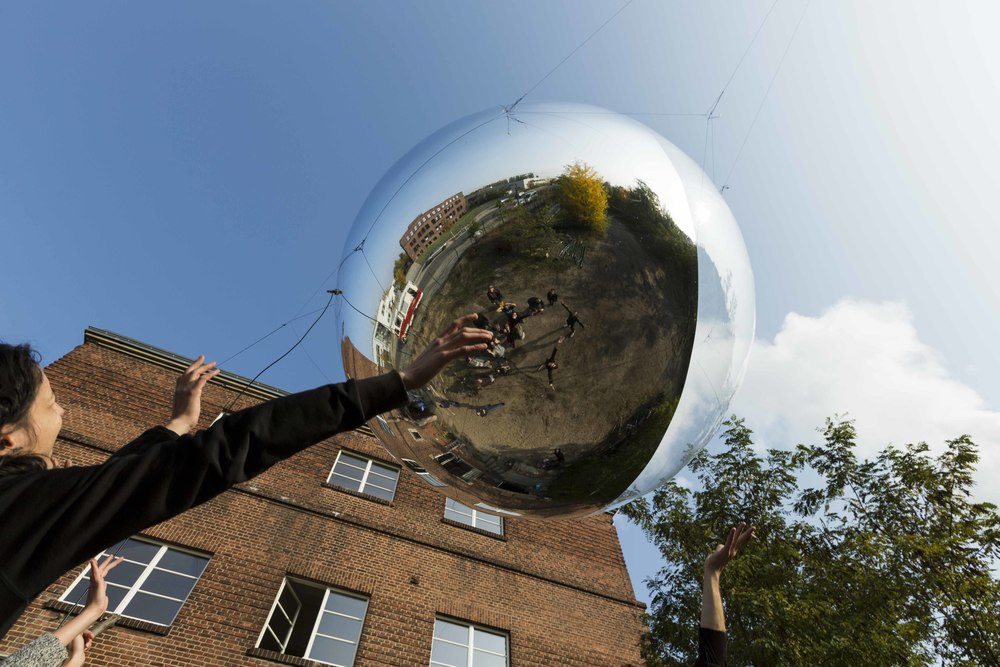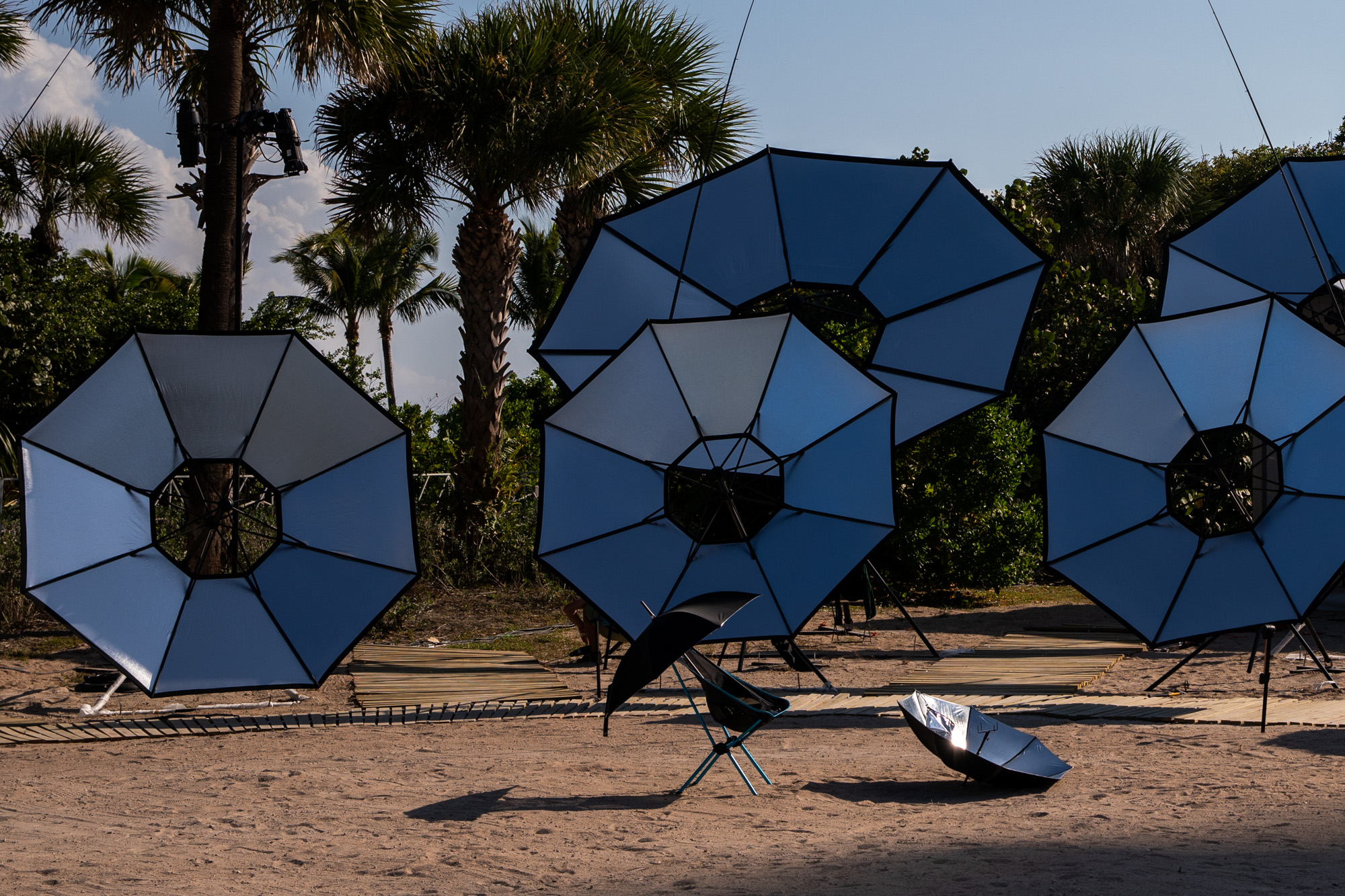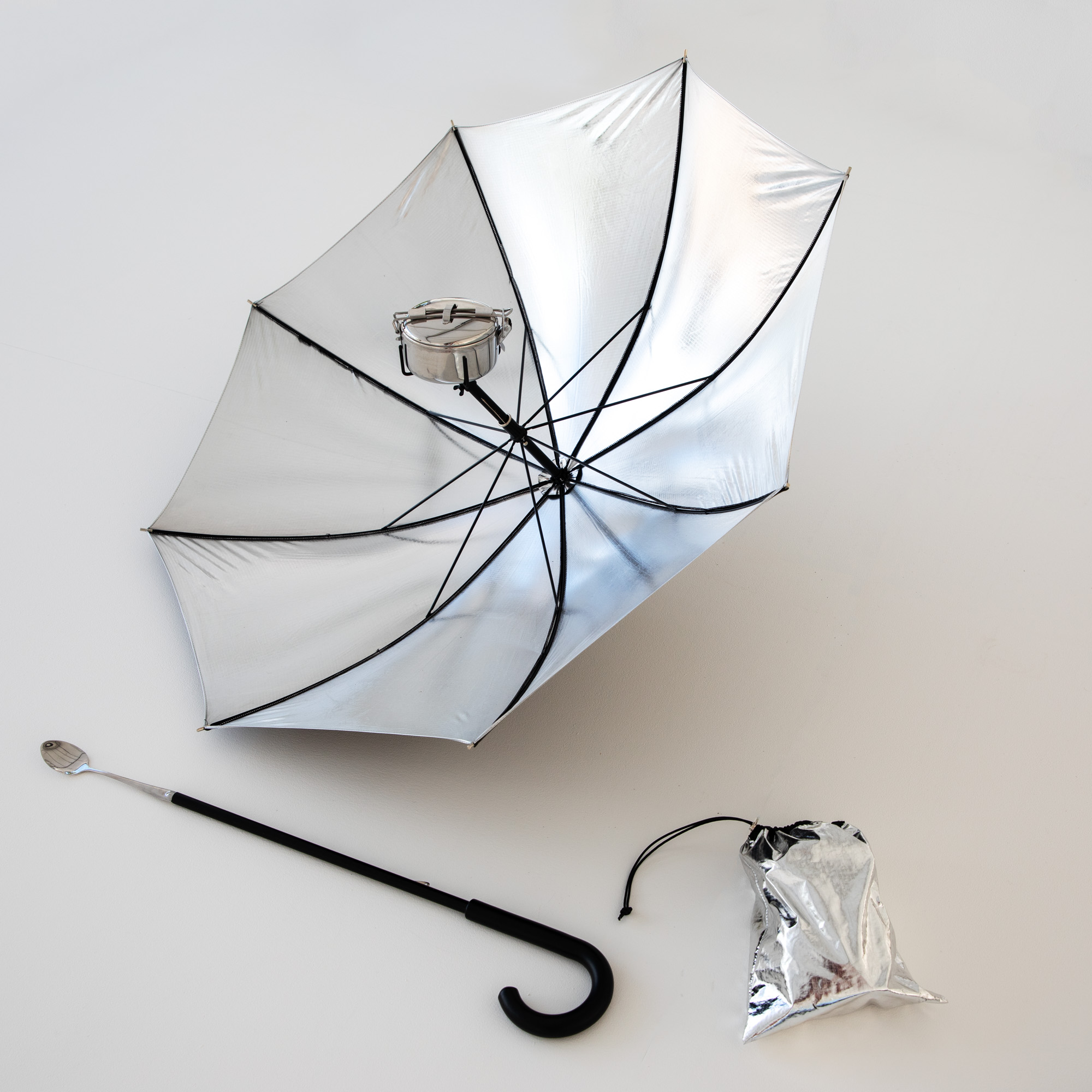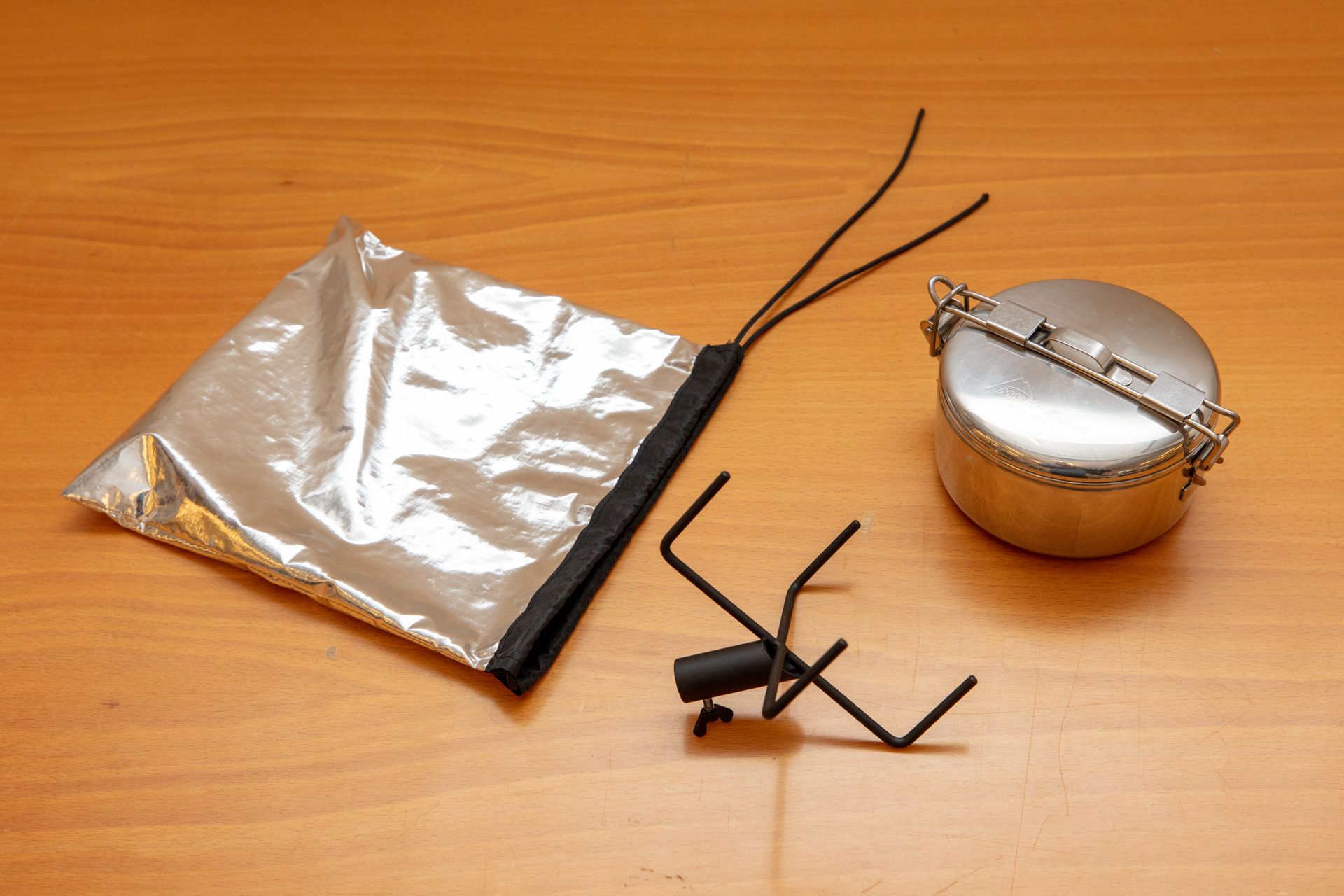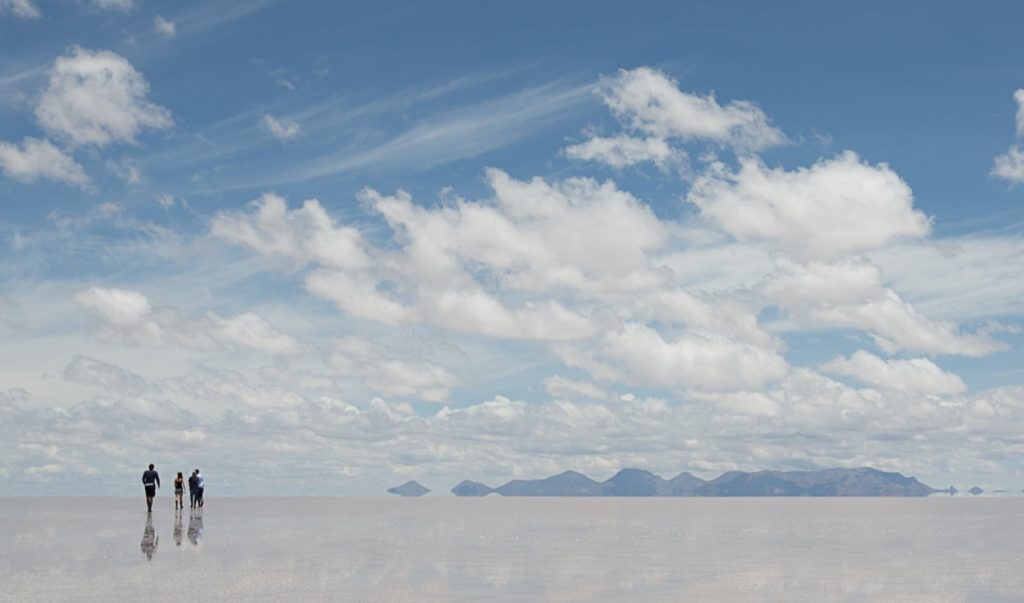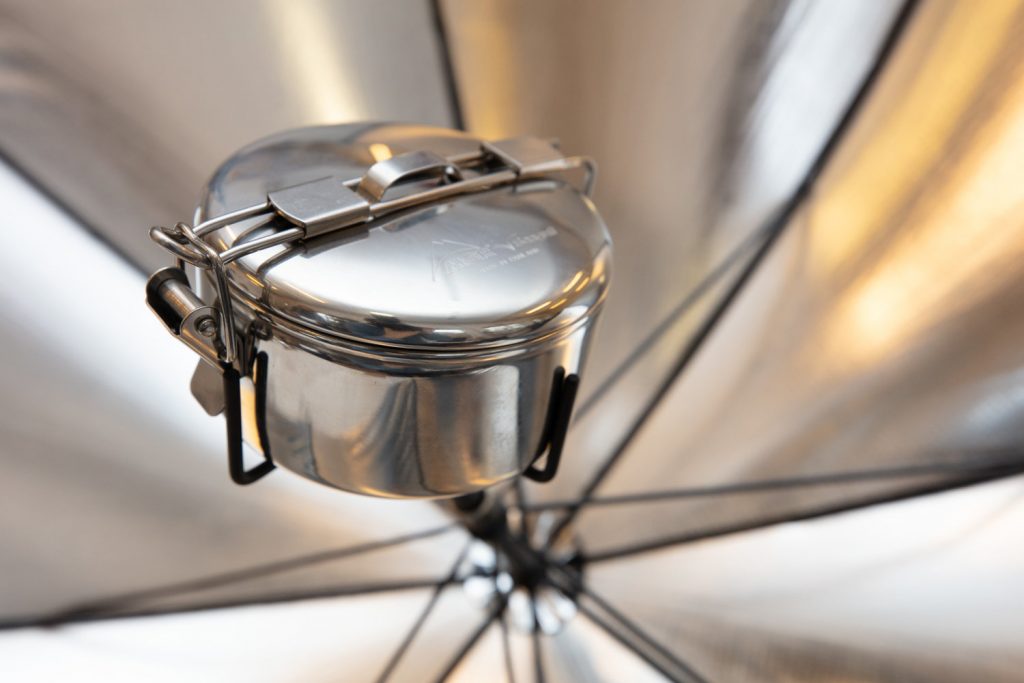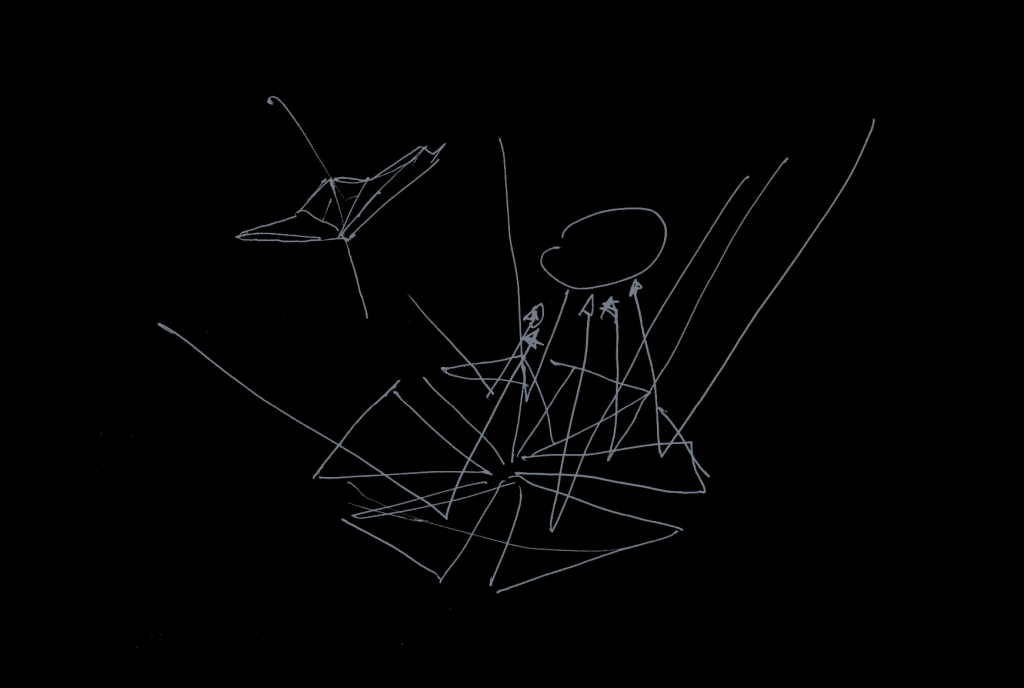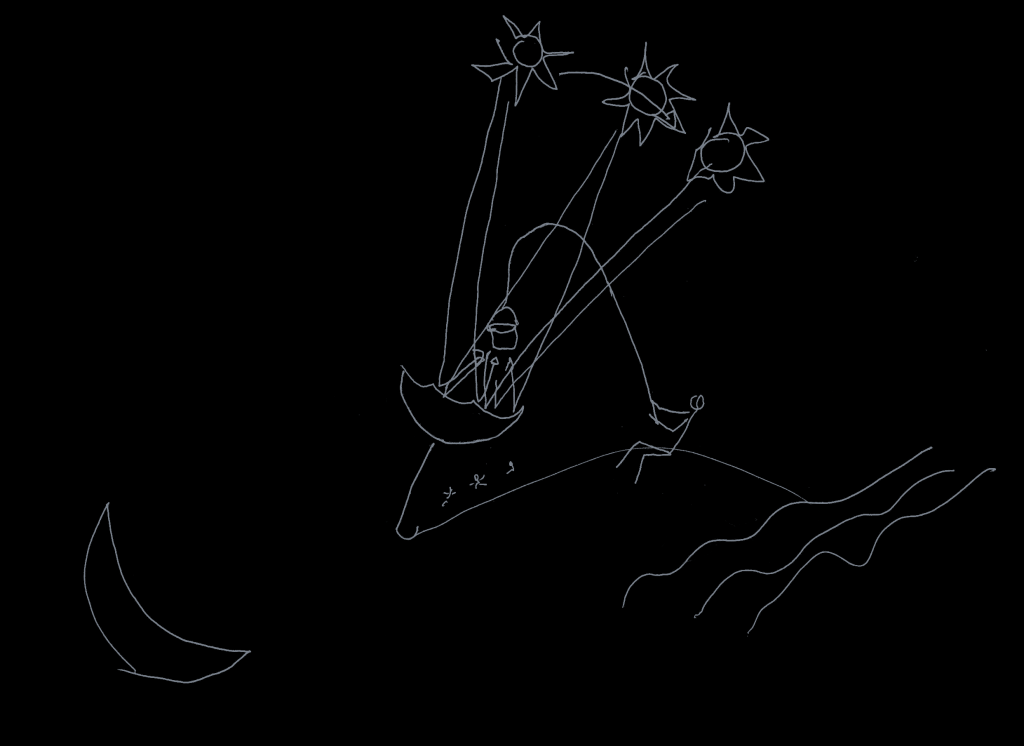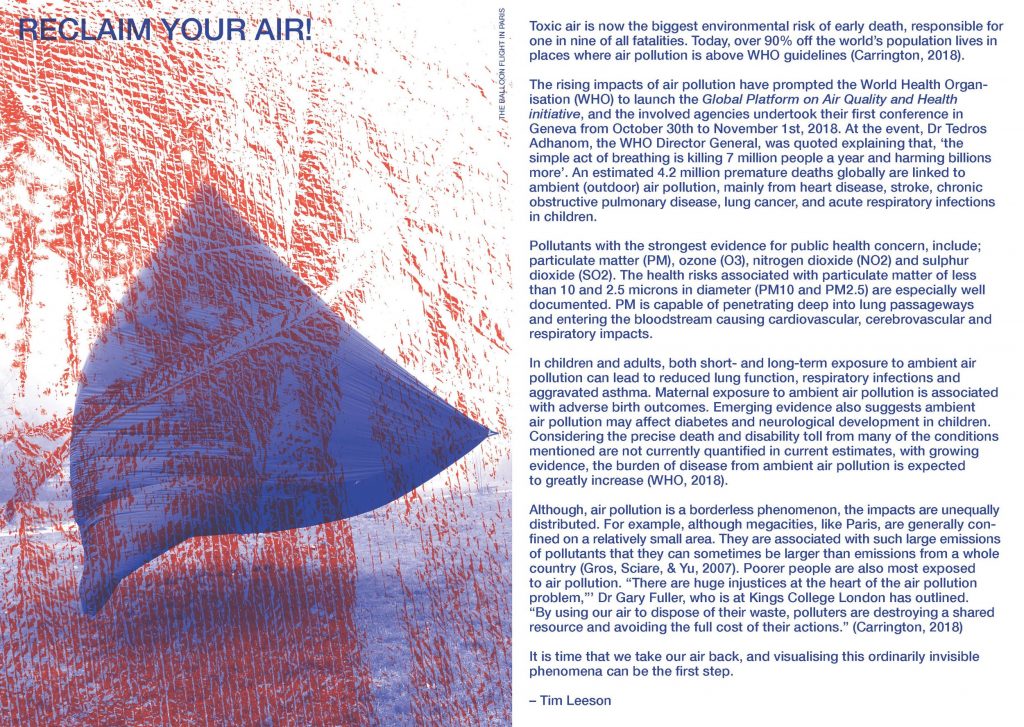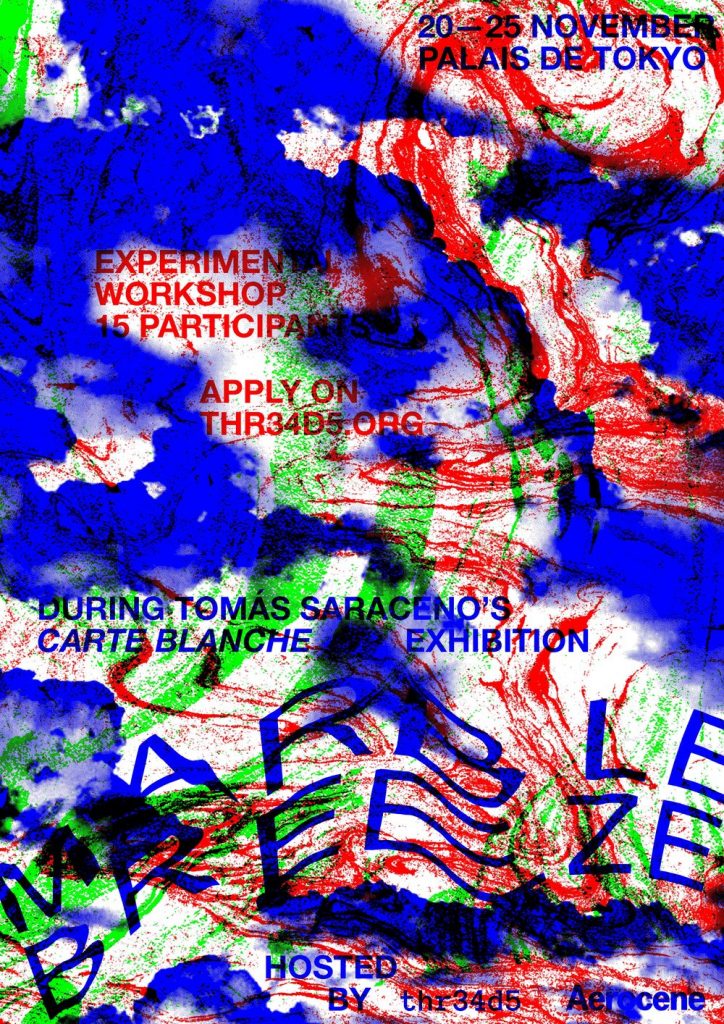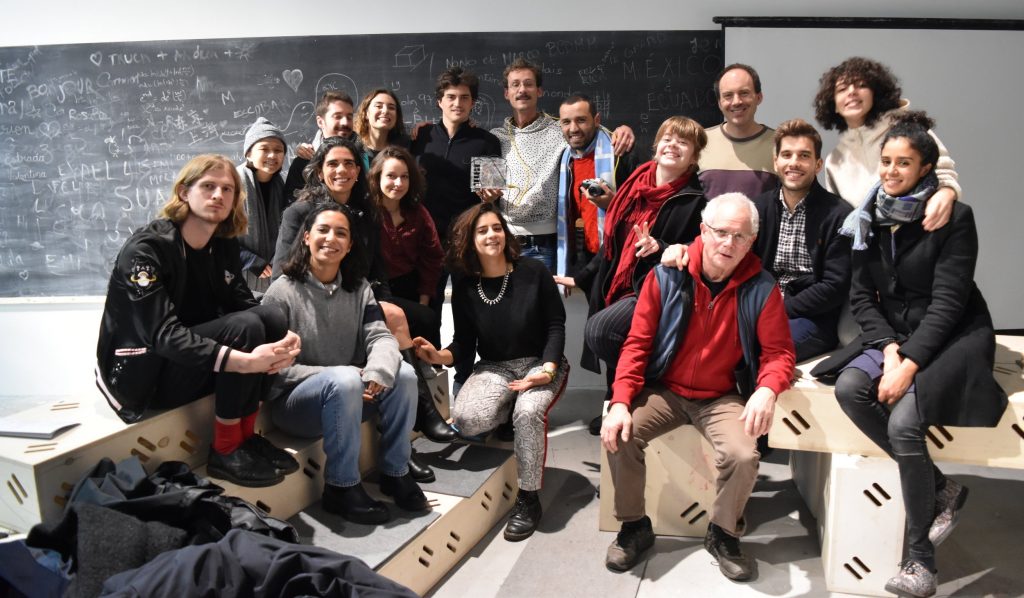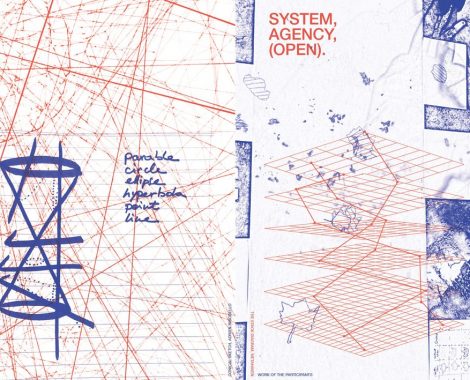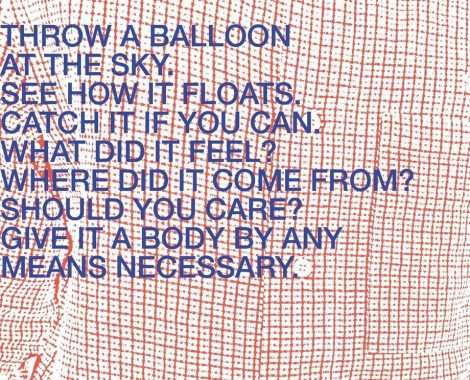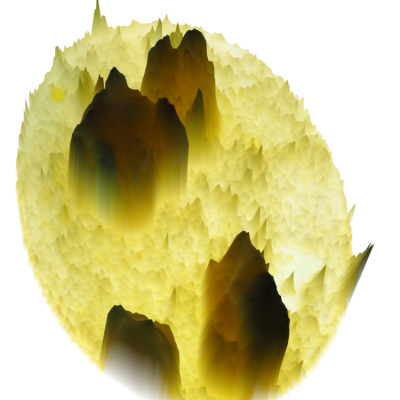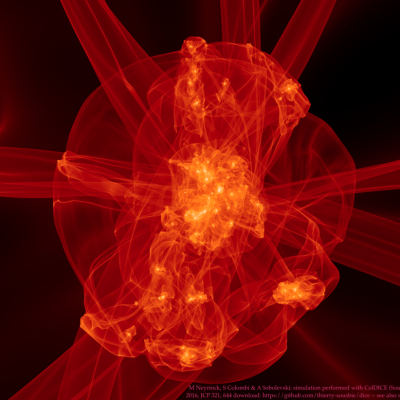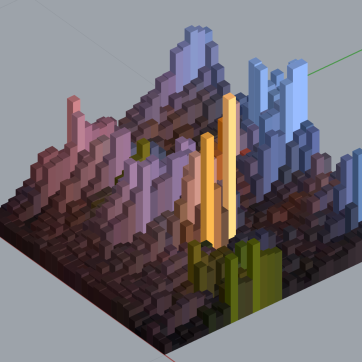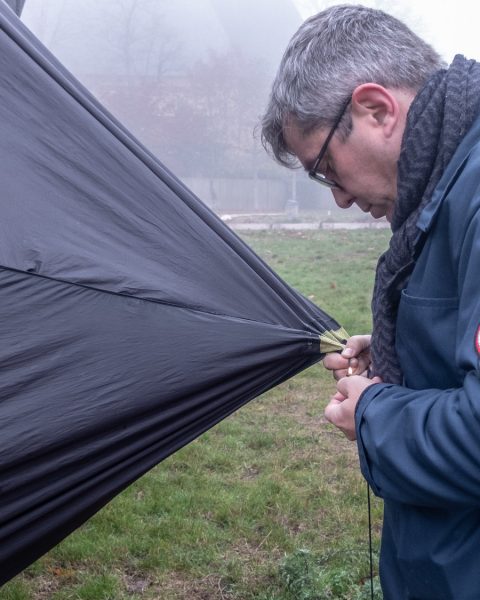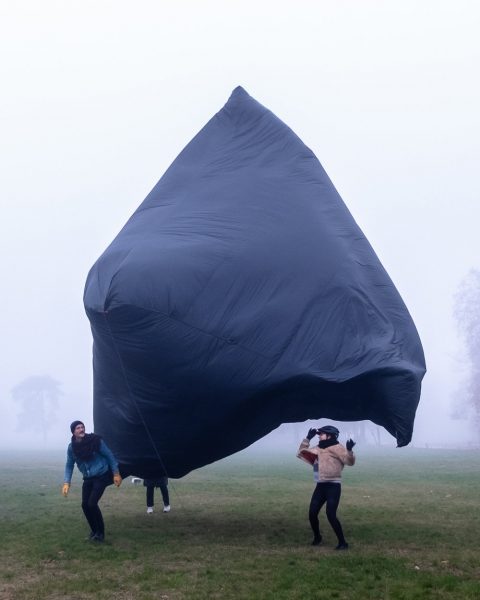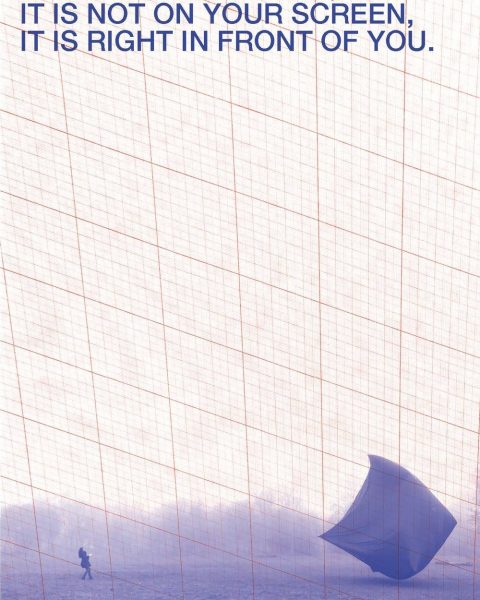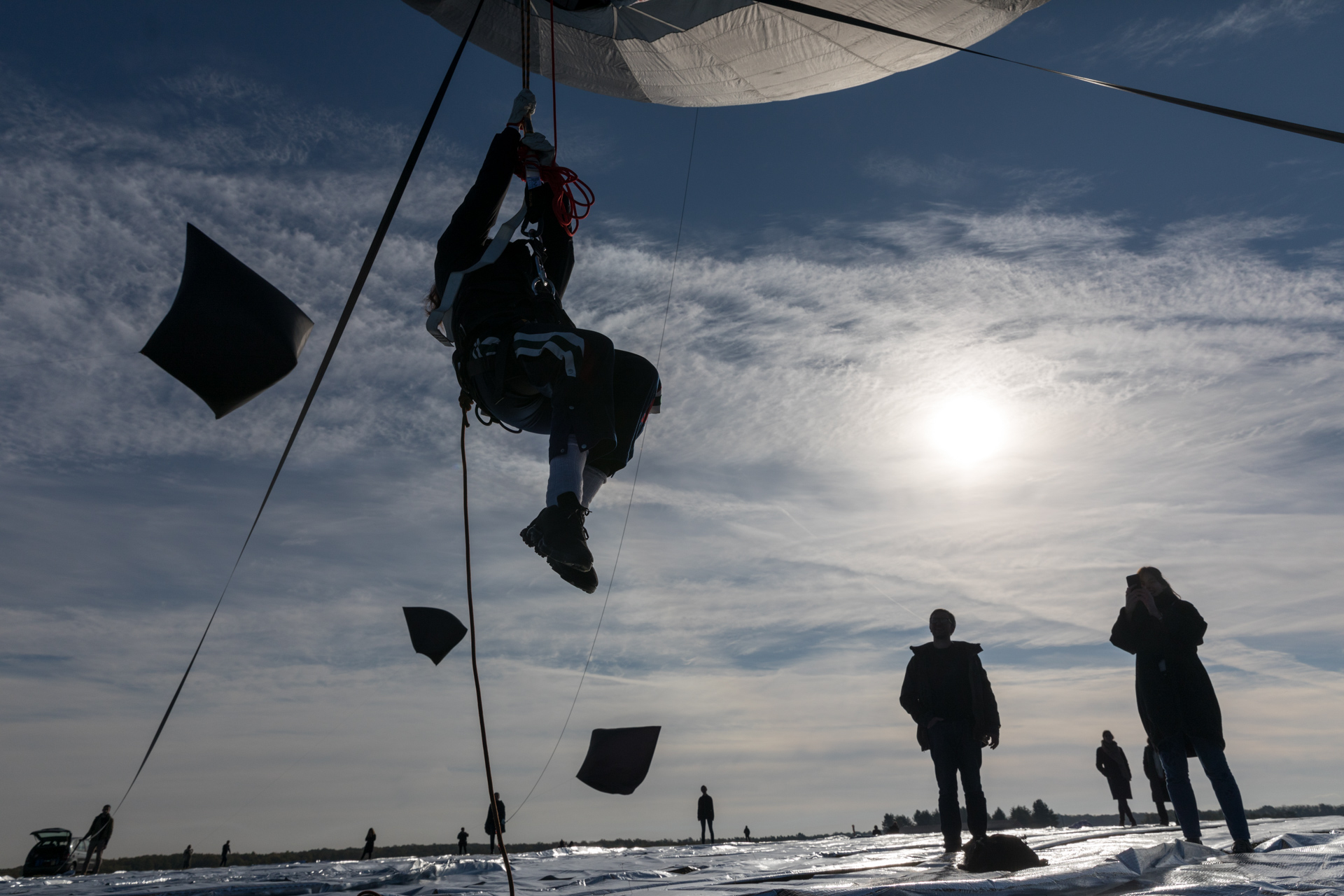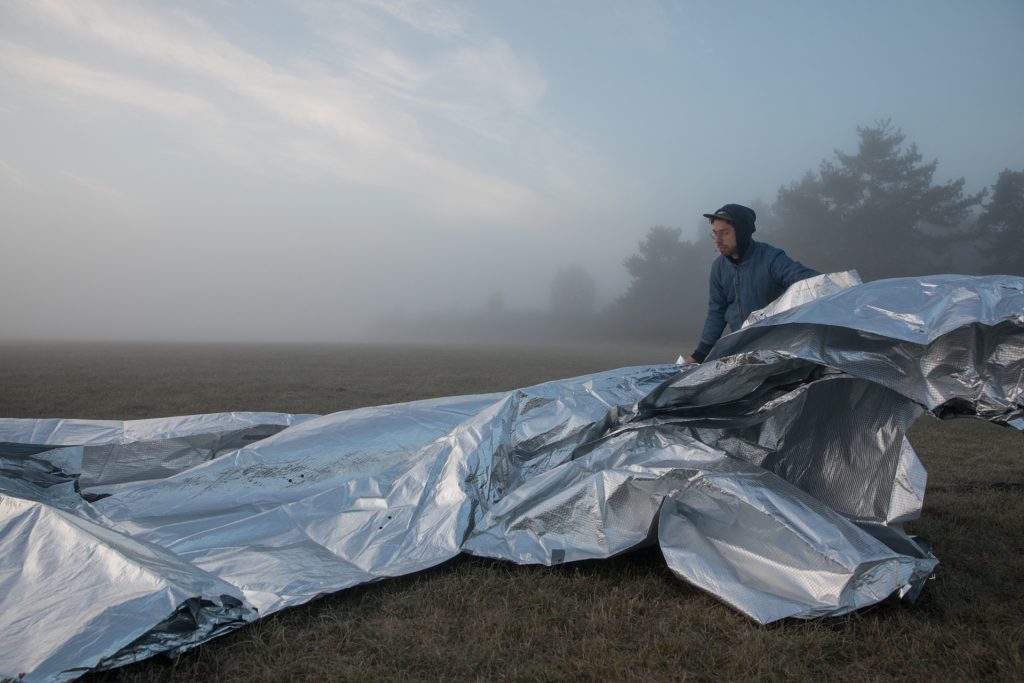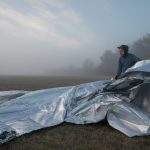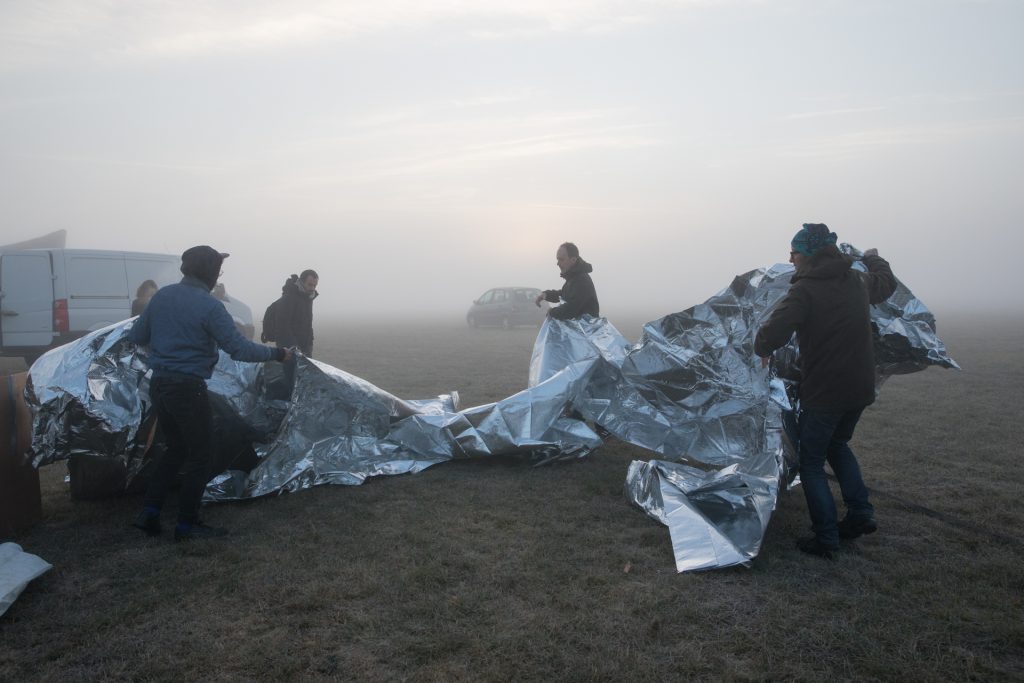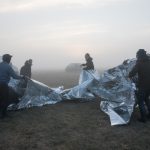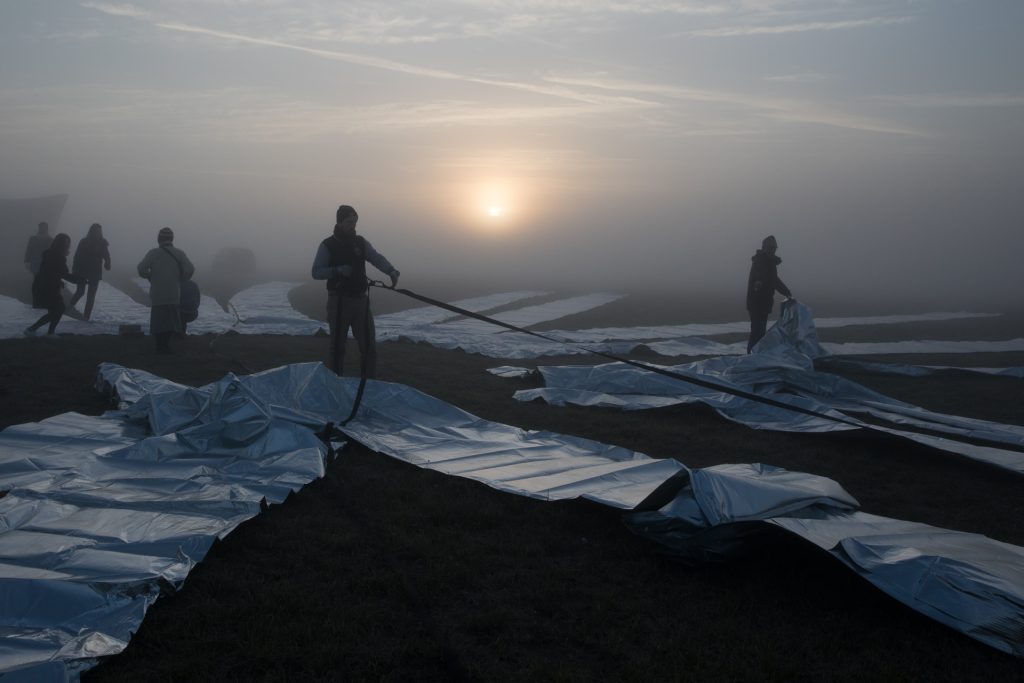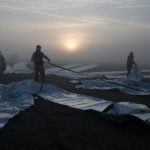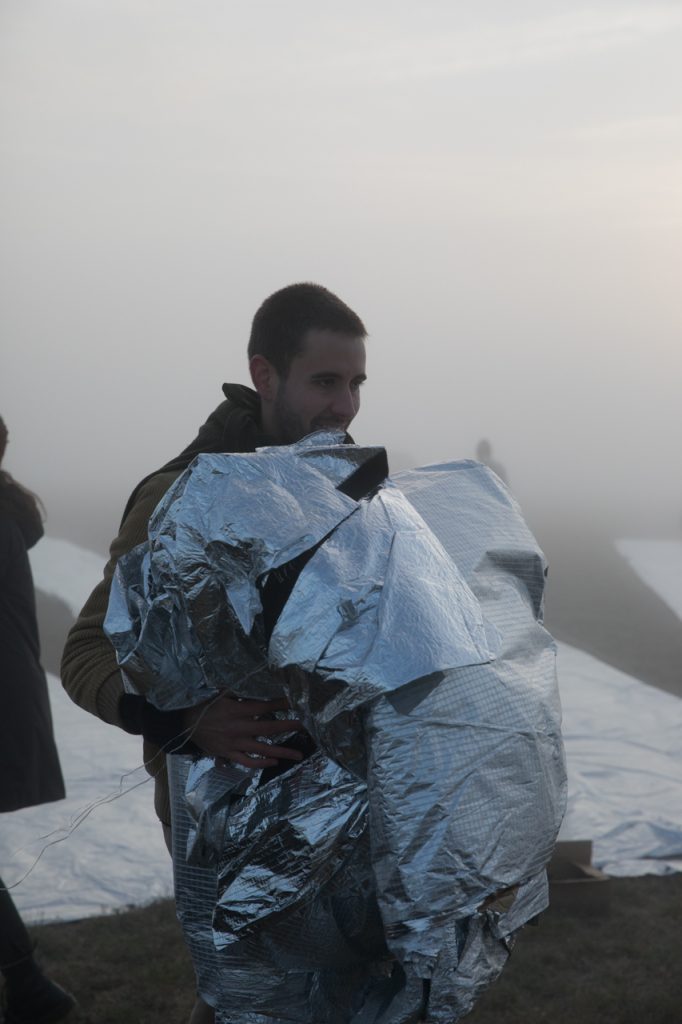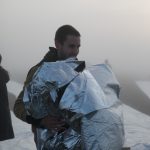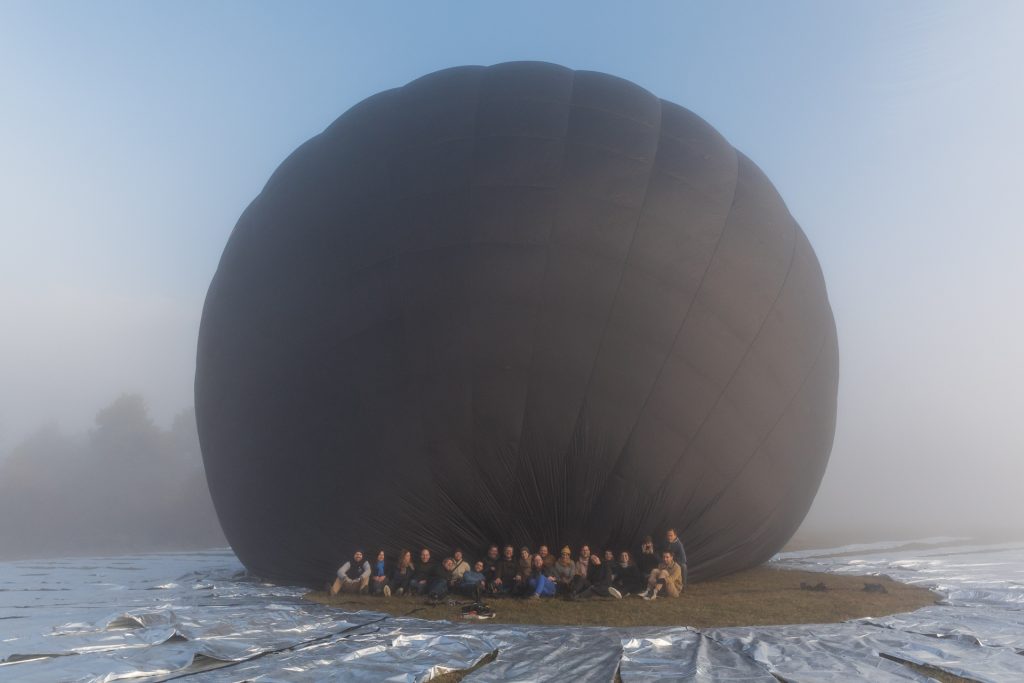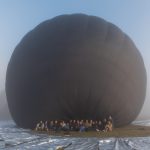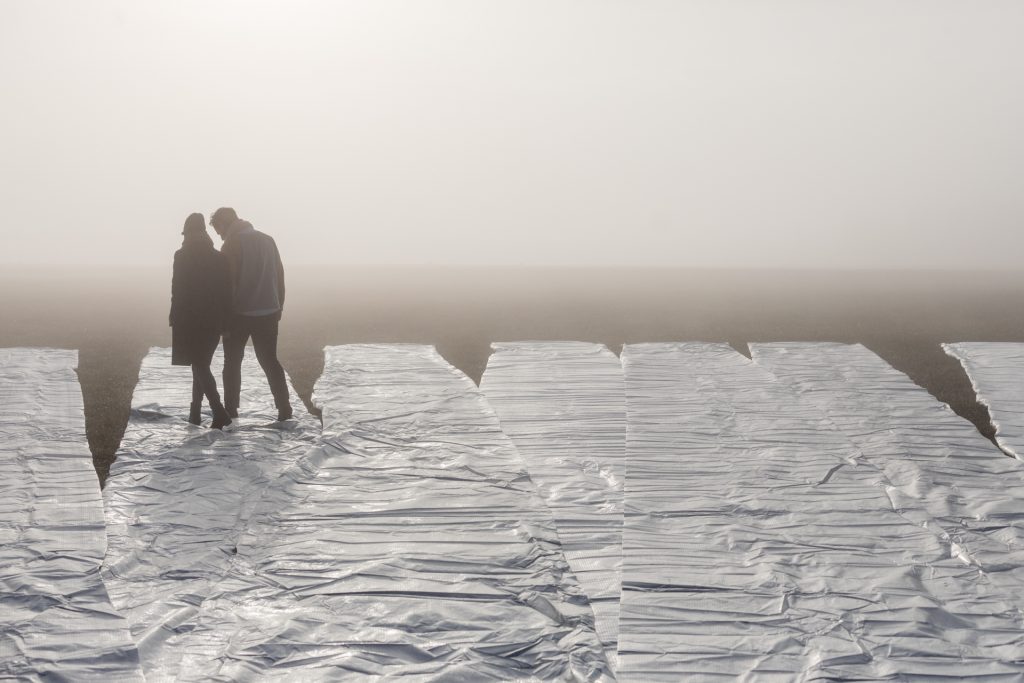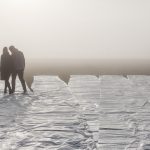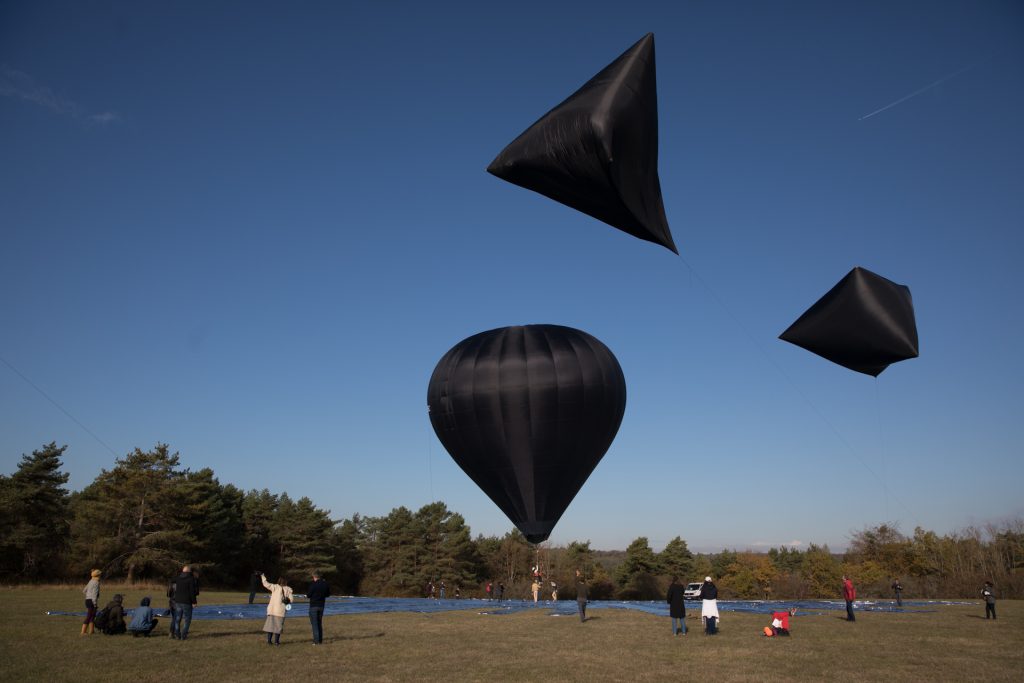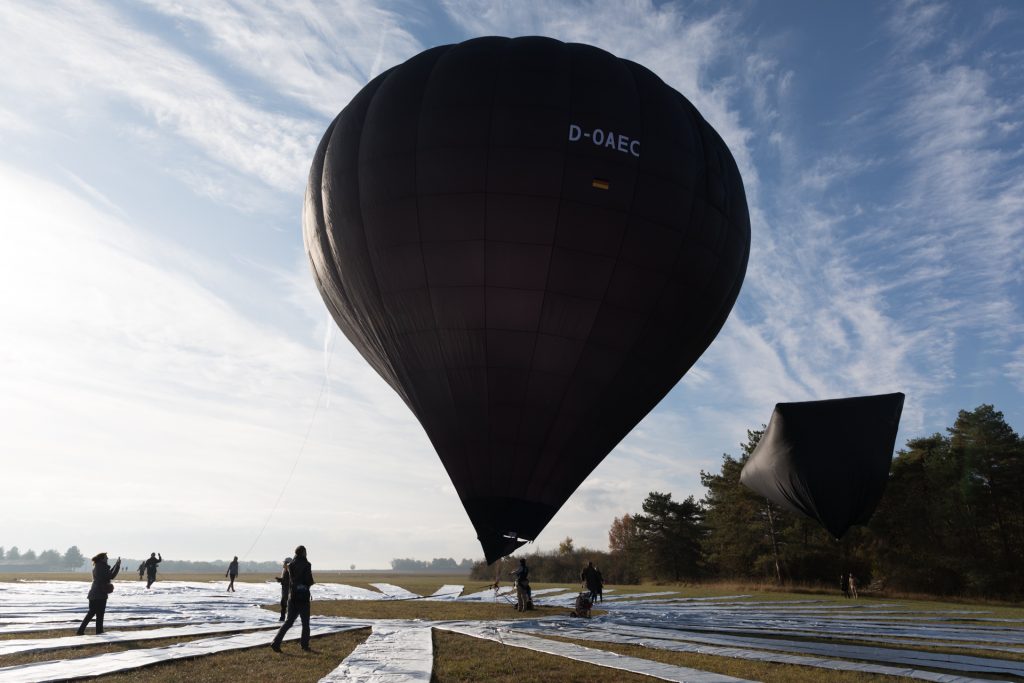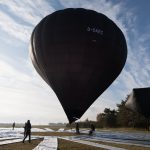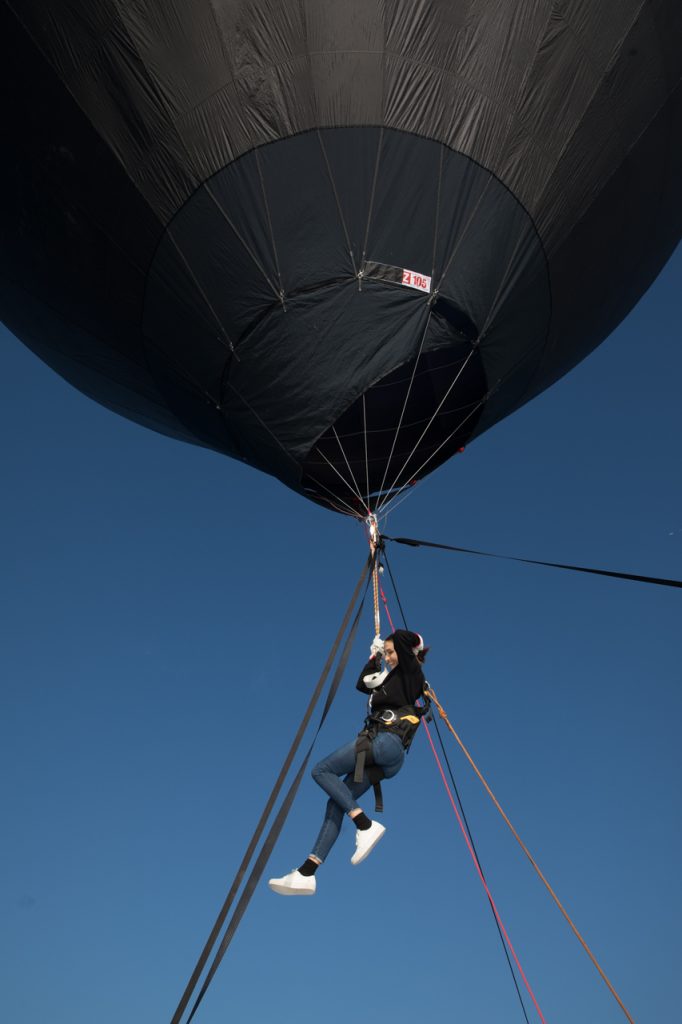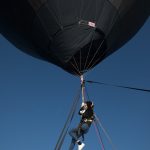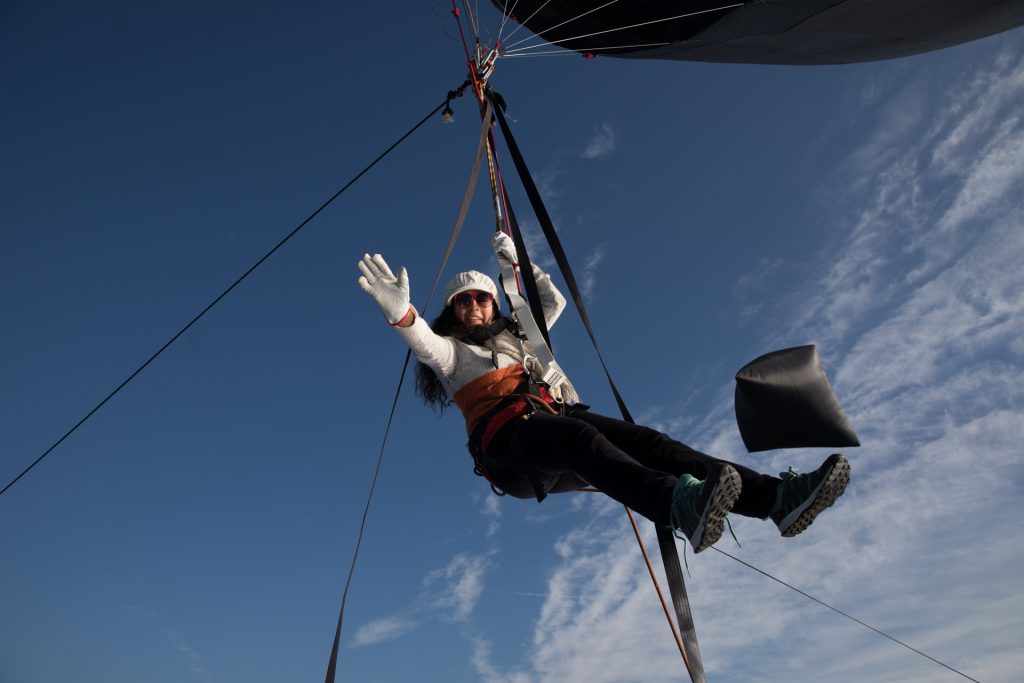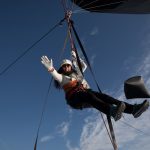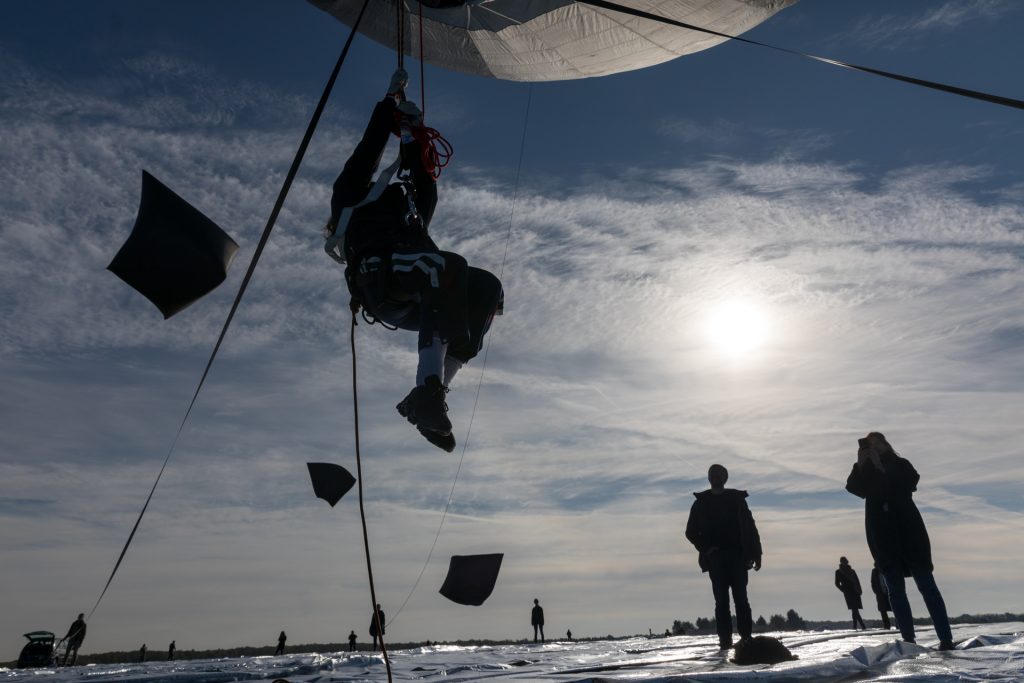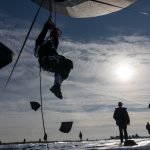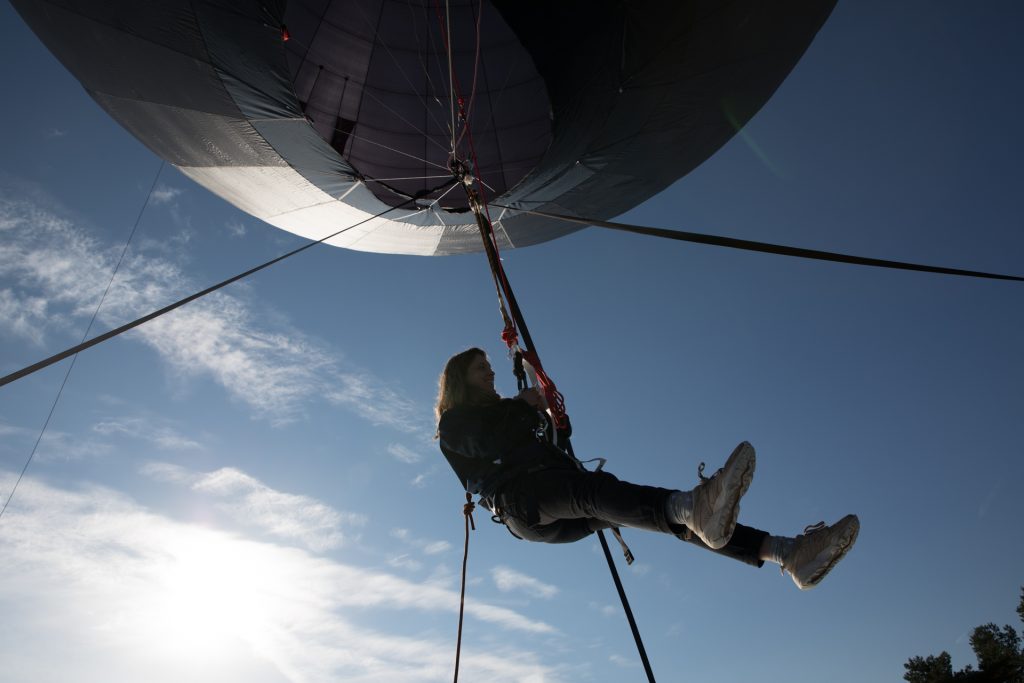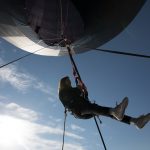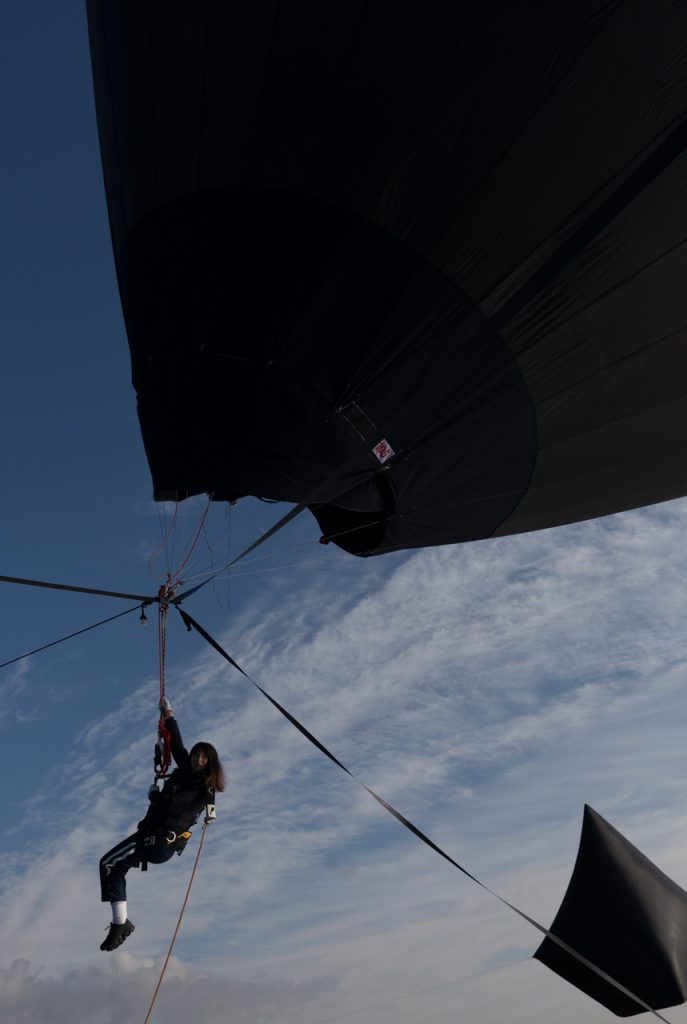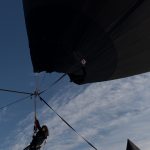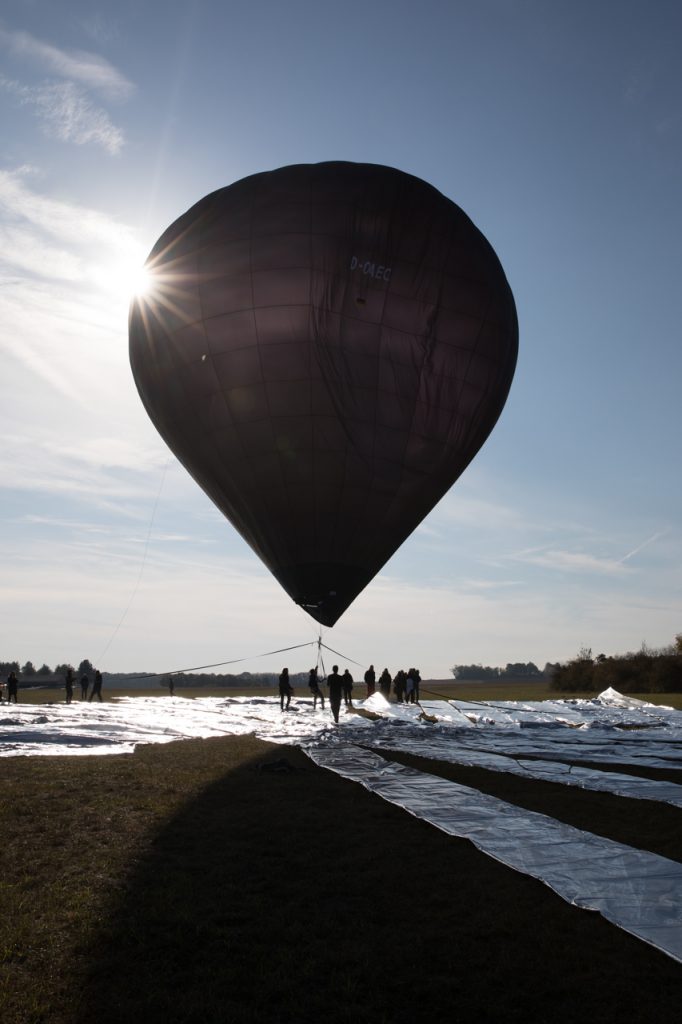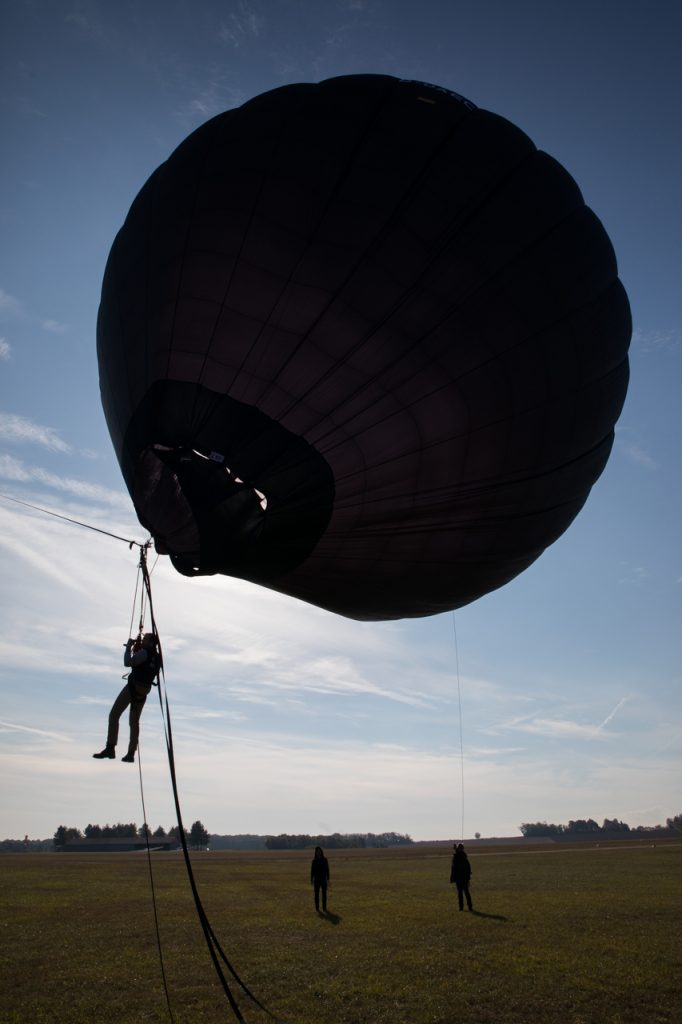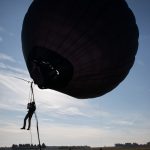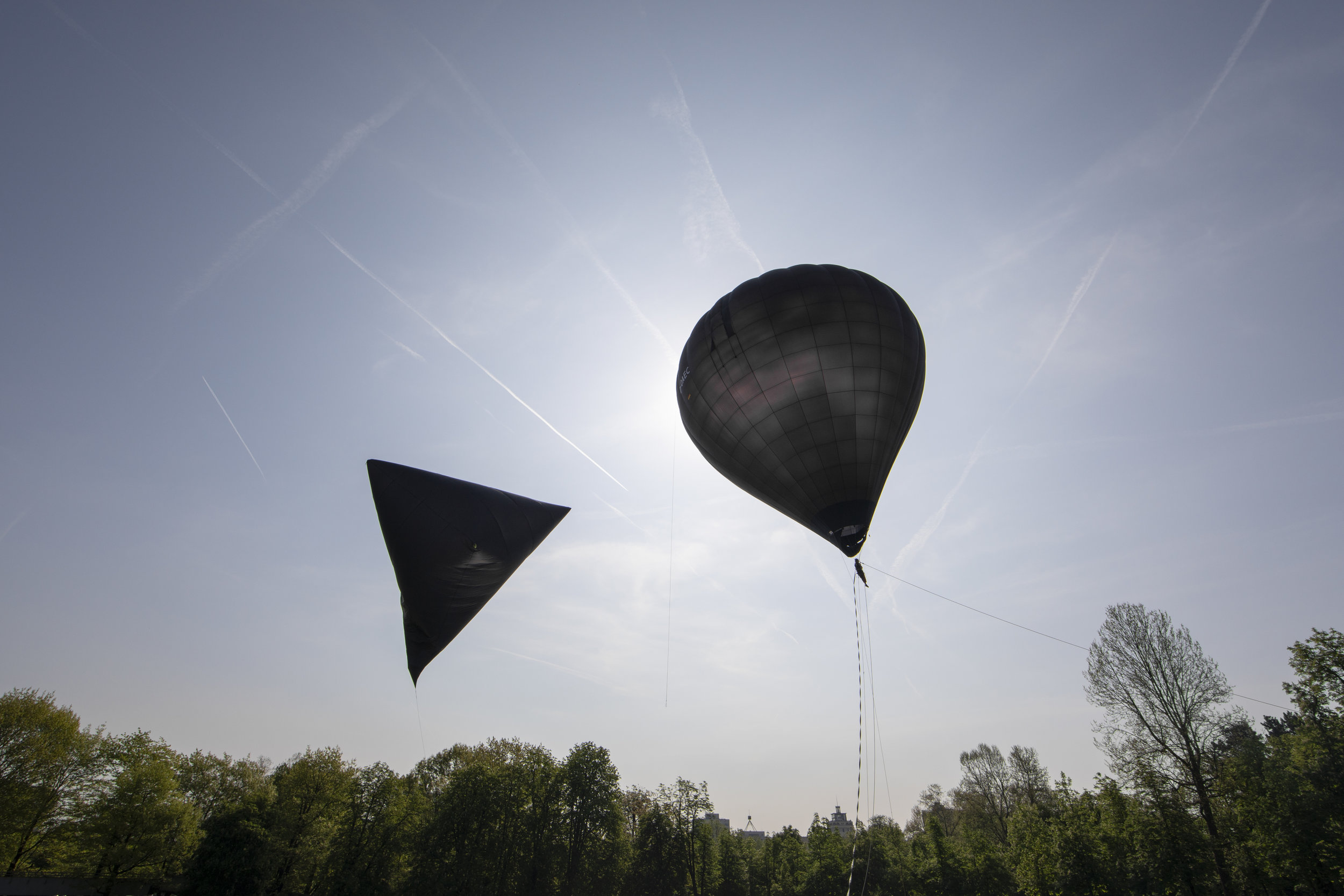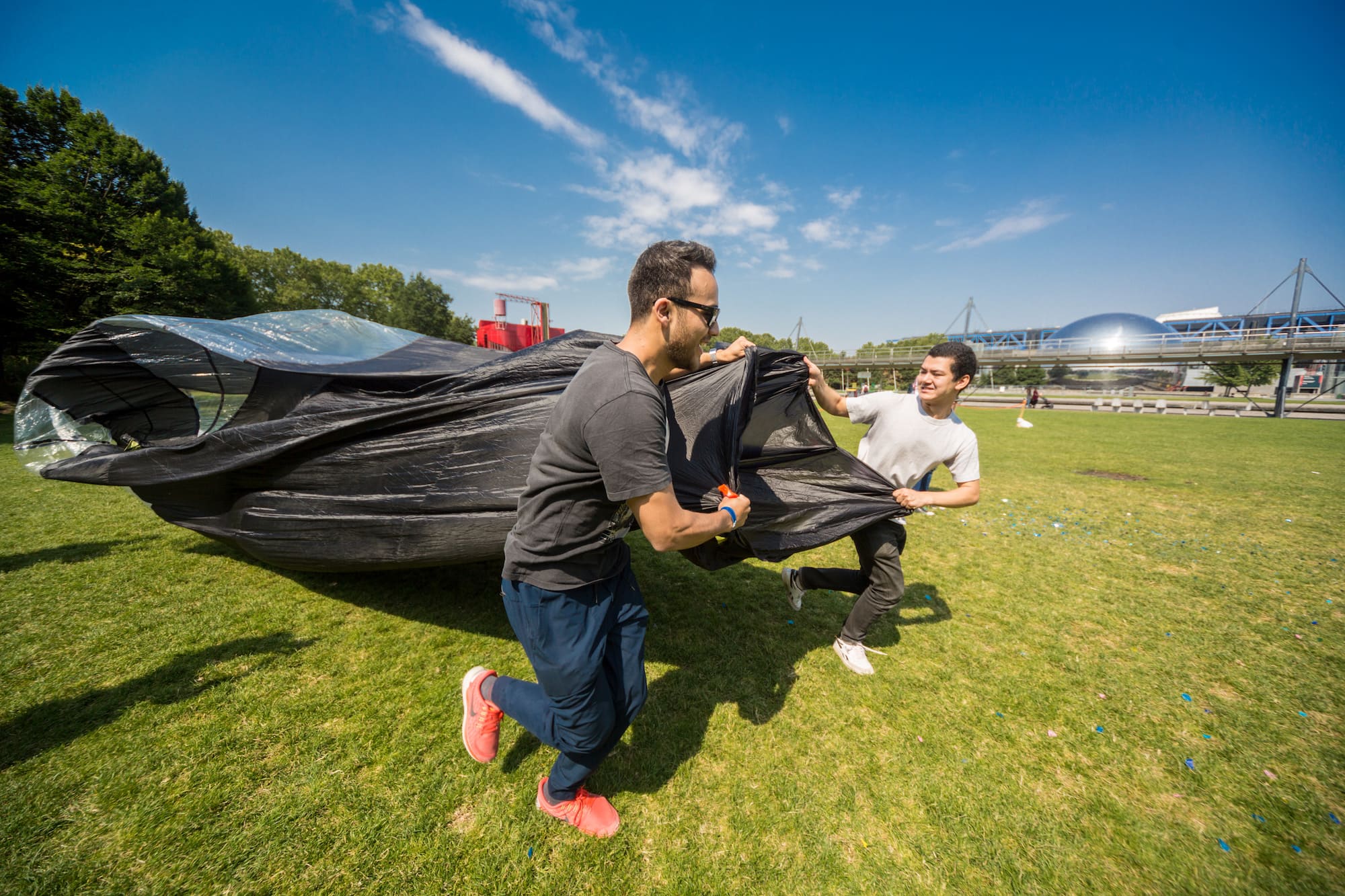Free Flight
Archimedes & Aerides
Saturday August 4

What would breathing feel like in a post fossil fuel epoch, and what is our response-ability?
How to challenge geopolitical borders in an age of climate inequality?
Last Saturday, August 4 in 2018, the Aerocene community reunited for two seperate free flights. First was an atmospheric rehearsal for the most sustainable and longest Aerocene Free Flight and for the first emissions-free around-the-world flight. After that, an aerosolar sculpture free flight that would be released from a kayak on the lake Helenesee.
Meeting at 8 am at Helenesee by the Wassersportzentrum, we started our journey towards decolonisation of the air from particulate matter.
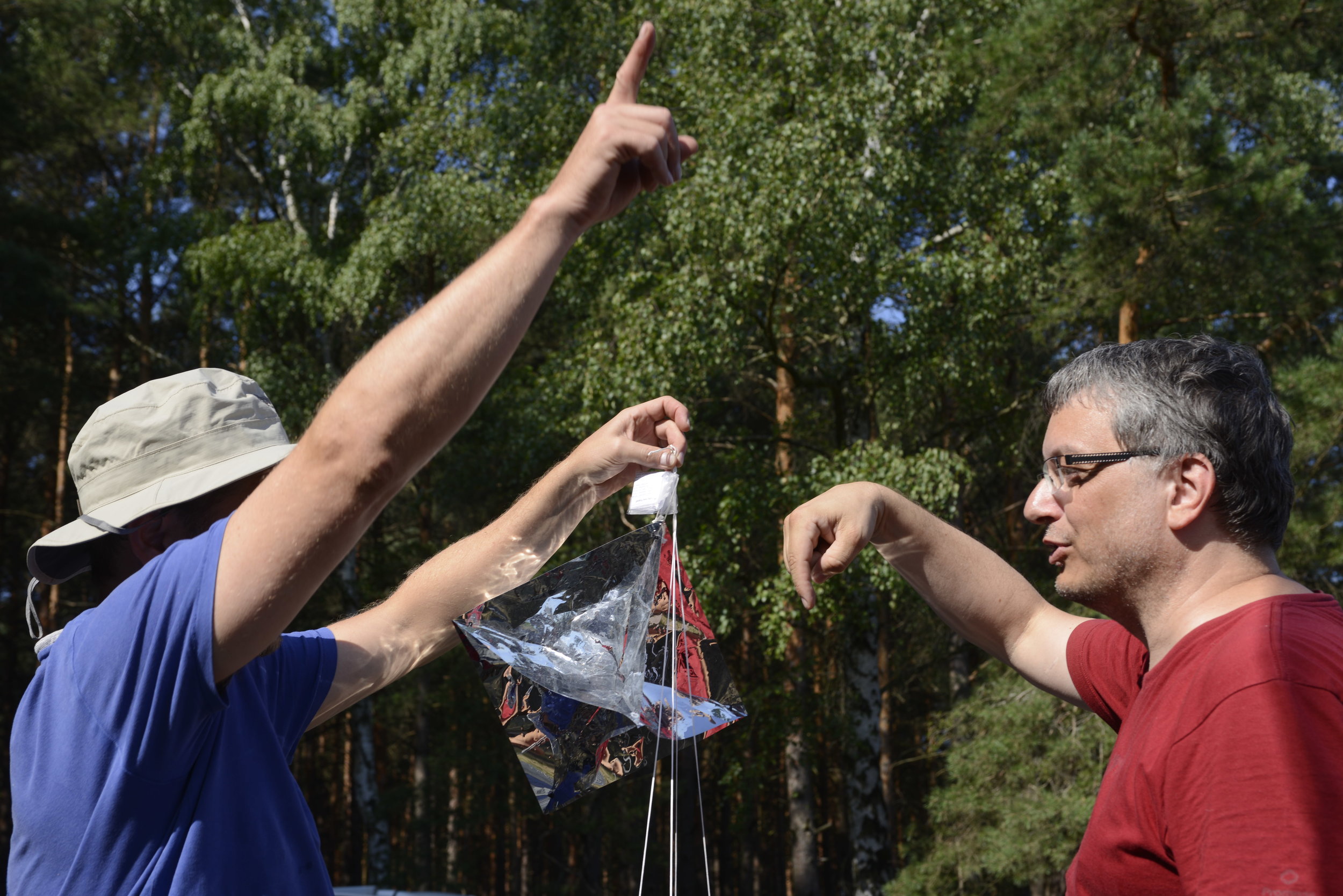
Once upon a time, millenia ago, people began dreaming about taking flight. The philosophers and thinkers who first thought, wrote and spread the word about this possibility had no notion of fuel. However, once the Montgolfier brothers took flight, things took a turn for the unsustainable. The brothers, and the people following them, were to bare the label aeronaut, which describes someone who operates or travels in an airship or balloon. It’s a word connoting mythicism, forwardness and conquering the improbable, which turned out not to rather conceivable after all.
Over the last 50 years, another generation of Aeronauts have resurfaced. Having a similar flare for exploring the improbable but slightly different intention, they revisit the great minds of the past which have been overlooked after the fossil fuel apocalypse. From this, they venture onwards, towards for brighter futures for all.

Like aeronauts uses s, futures do the same. Devoted people, from diverse backgrounds, in diverse communities, with diverse positive intentions, have gathered over the last decades to pave the way for us to quite literally, track them. In the case of the Aerocene community, the word aeronaut takes on another form. “Aero”, a short, clean word refers to the aerial, a symbol of the essence of our activities, communicating a message of simplicity in a world of tumultuous geopolitical relations, reminding us that the air belongs to everyone and should not depend on any type of sovereignty: free from borders, free from fossil fuels. “Naut”, also short for nautical, is a significant and perhaps accidental recognition of the similarity of floating in fluids, whether gaseous air or liquid water. The neologism highlights togetherness, as with the aeronauts of Aerocene, just like liquids and gases conjoin under the term fluids, our community effort synthesises under Aerocene.
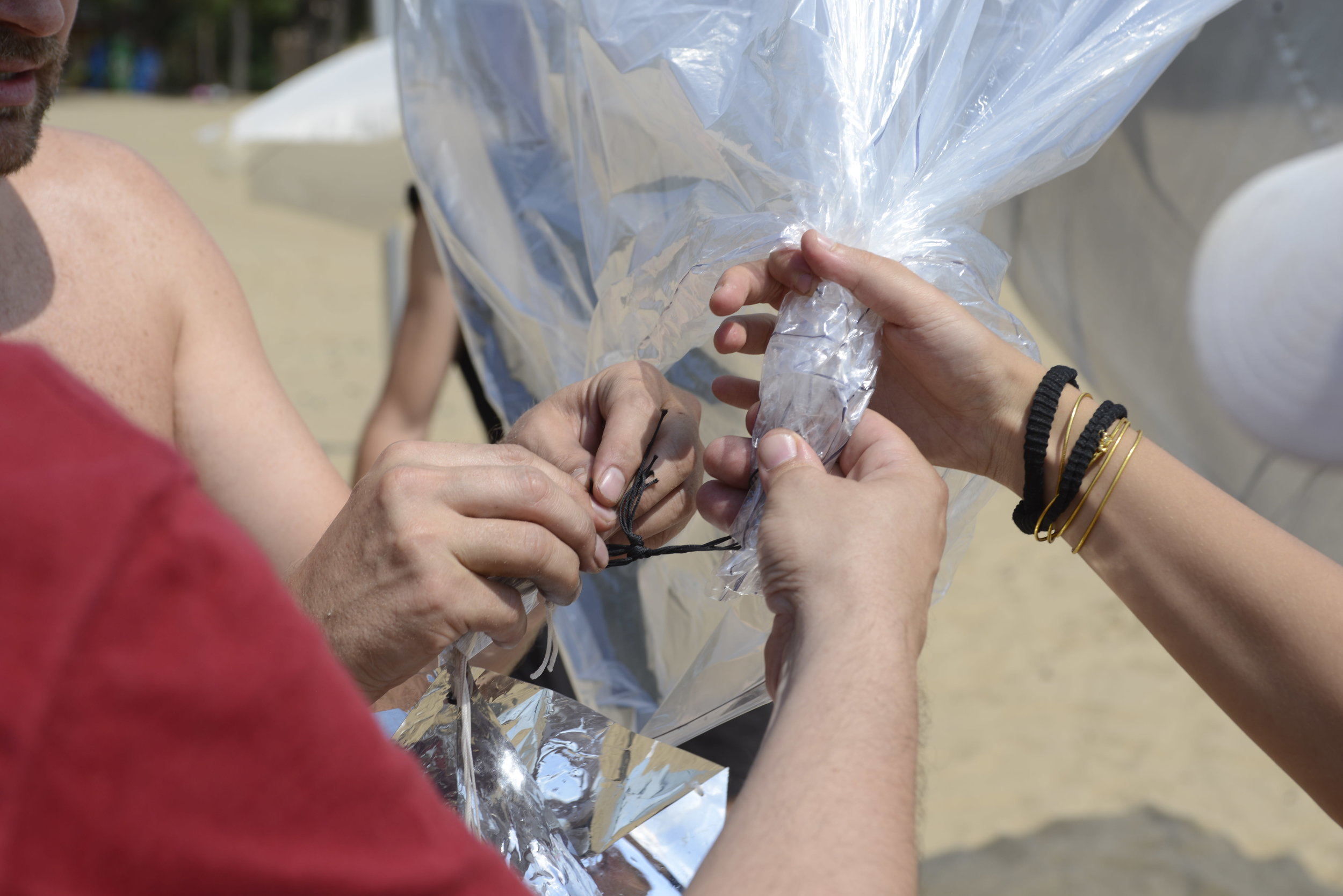
The 4th of August was special; the Aerocene community united once again for an unforgettable free flight journey. Community commitment and fellowship, with each other as individuals, as well as with the earth, seemed to be the key ingredients bringing them together, this time with an added accomplishment: many had been camping on site prior to the morning of the free flight. After necessary preparations, tranquility took over the campers as they reconnected with the world around them and experienced the harmonic consonance of the earth. When crashing into sun-heated water, and peering upwards, surrounded by the power of the sun after it disappeared behind the horizon, we floated peacefully, perhaps unaware of the depth of meaning that this swim had for the upcoming flight.
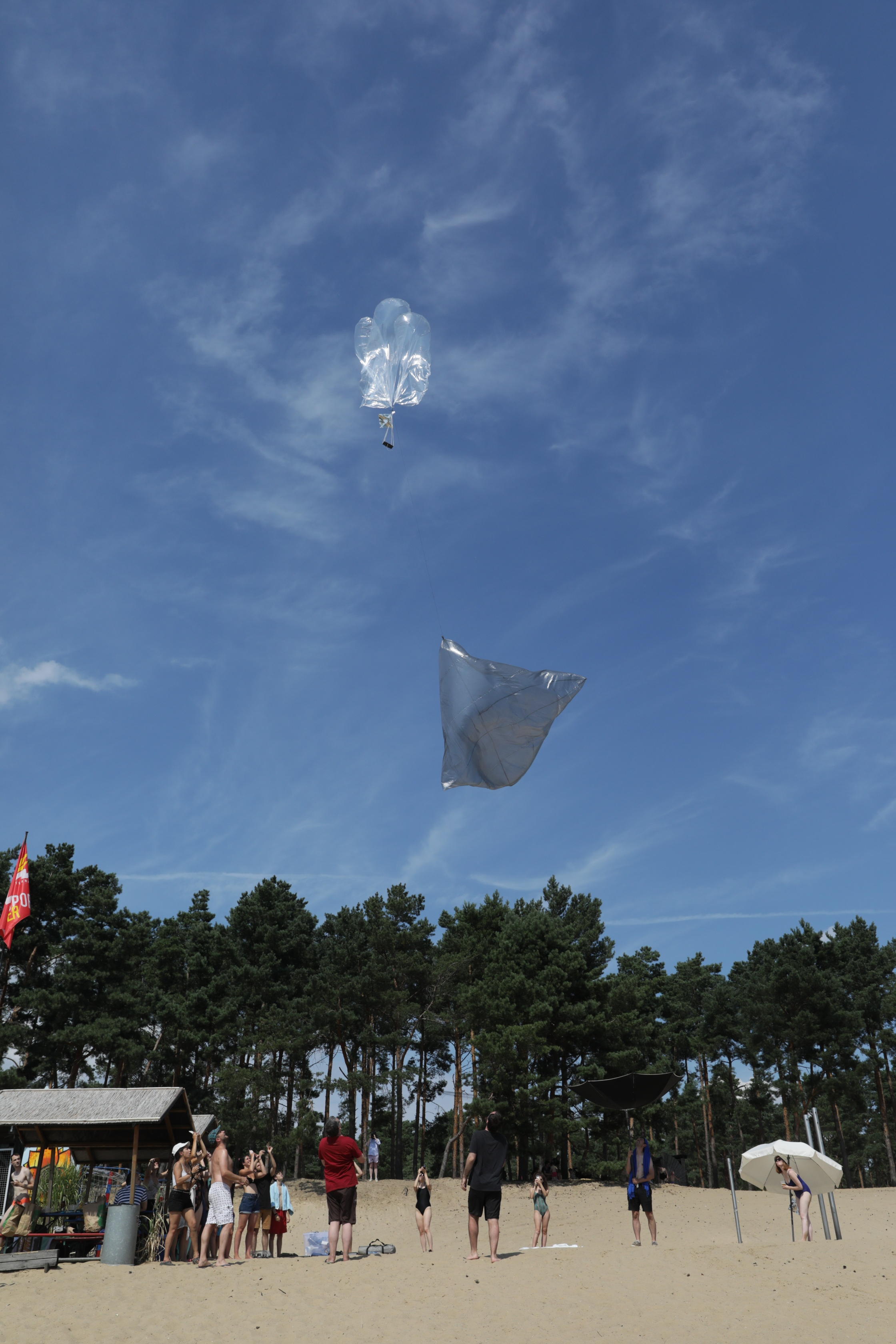
Although our Aerocene journey had begun the previous evening, waking up with the sun and slowly recognising our surroundings, empirically and metaphysically, was a key moment in this free flight. Rising up, hopping down from a flying tent that was innocently strapped between trees, or rising up and out of an earthbound tent, revealed to us the peaceful surroundings. In that moment we couldn’t have felt the sun’s intensity stronger. Waking up differently than we were used to, out of the usual routine, gathering with the community and floating with Aerocene, we were still unaware of the two flights that were about to happen with our two sculptures: Aerides and Archimedes.
The Archimedean principle states that the upward buoyant force that is being exerted on a body and immersed in fluid, whether partially or wholly, is equal to the weight of the fluid that the body displaces. It acts in the upwards direction at the centre of mass of the displaced fluid. This principle applies to any body, including aerosolar sculptures, which tap into an unlimited source of energy, the Sun. The sculpture is designed to absorb and preserve as much infrared radiation as possible, and when the warm air inside the balloon becomes lighter than the ambient air, the resultant force is a vertical upwards force: the aerostatics force or ‘lift’. In this way, our Archimedes represents the dawn of aeronautics as well as the later ascent of the aerosolar many years later, as originating from the clean mathematical principle stated by him.
As aerosolar flights are weather dependent, needing sun and minimal wind to lift, and we were lucky to experience a warm and sunny day. While the sun was shining, returning to the water for a swim was a great option to cool our fragile bodies from the heat of the sun, the very source that lifts the Aerocene sculpture, allowing it to float in the air as we do beneath it in the water. Gently on the clear waters of the lake, we float with Aerocene, all heated by the sun. Due to the partially reflective material of the Aerocene sculpture, the air inside an envelope will slowly heat up until the inner air density is low enough to provide sufficient lift to overcome gravity and make the envelope rise. Once in the air, an untethered Sculpture can easily rise up to the stratosphere in a couple of hours. Filled only with air, lifted only by the sun and the infrared radiation from the surface of the earth, carried only by the wind, floating onwards without the use of fossil fuels, is a recent development of today’s aeronauts. Aeronautics has required patience, and this is no exception. Inflating the sculpture Archimedes was done by running in order to fill it with air, and waiting for it to begin to rise before guiding it to the water, from which it was released using a kayak. Despite light cloud cover at this time, the radiation reflecting off from the glistening water and the heat of the sun above allowed it to lift into the air smoothly.
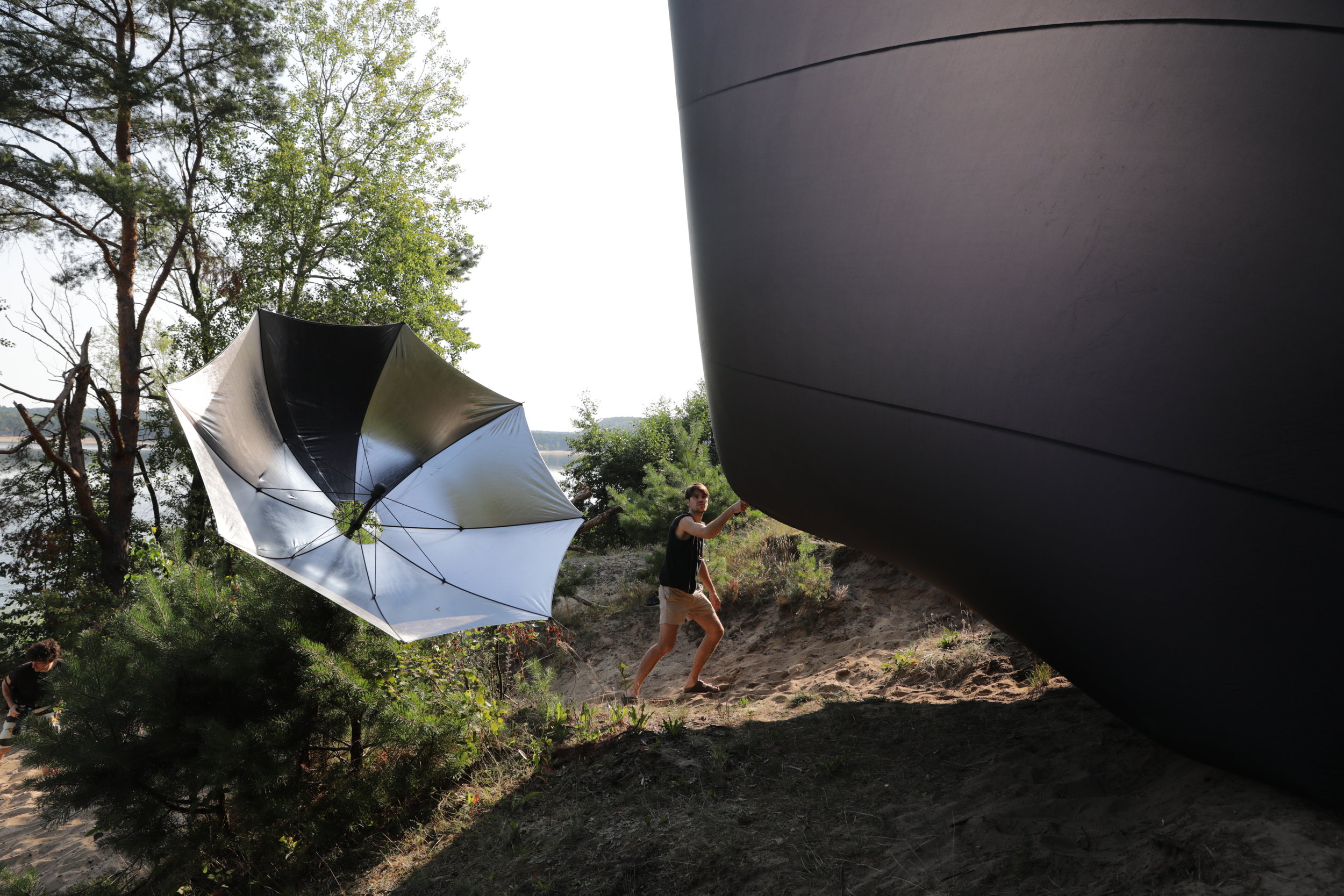
In accordance to the patience required in these types of events, the importance of spending time with each other and getting to know one another cannot be overstated. We had plenty of time to do so on this day. After some intermission, which can always be expected with aerosolar launches, the launch team and the rest of the community were preparing for the first-ever free flight rehearsal launch. Aerides, a tetra shaped balloon, accompanied by a small ensemble of 6 sbs-13s, was aiming to reach a flight level of 13000 meters. Followed by stations worldwide in collaboration with the APRS community, the flight was a test of overnight long distance flight constantly capturing temperature data from inside and outside of the aerosolar sculpture. If it would travel across the globe, it would be the first time with a camera. Attached to the balloon, there was a solar cell and a tracker, Pecan Pico 10-B, built by Aerocene community member and radioamateur Sven, with help from Bob in Australia, their collaboration a global journey itself. Since Aerocene technology is open source, everybody has access to it, and to track, modify and to change, and is invited to do so.
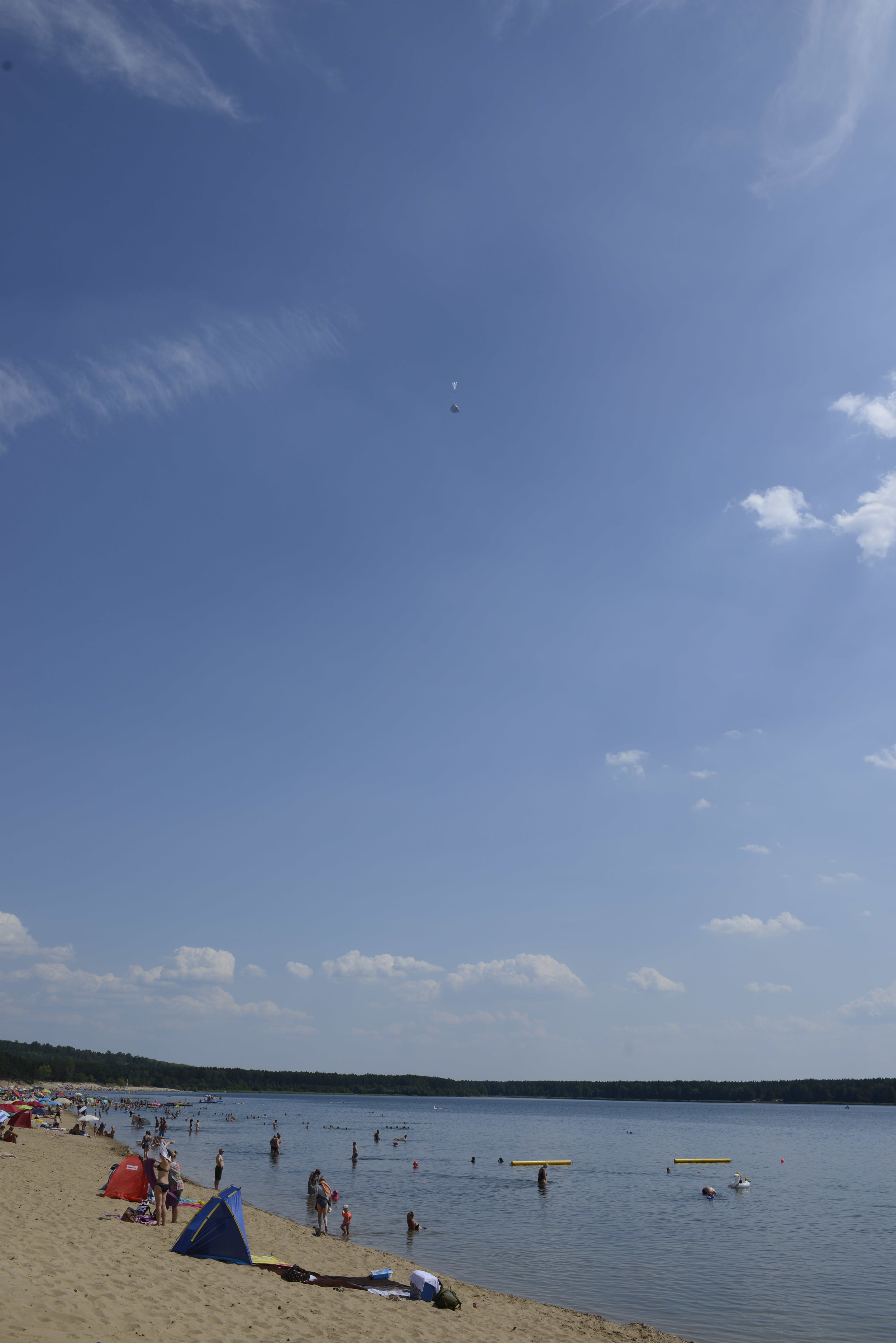
The concept behind the flight was to photograph and analyse the behaviour of the solar balloon and its day-and-night-cycle, in which the power of the sun is ever present but also everchanging. The aim is to be able to complete an aerosolar emissions free around the world free flight in the foreseeable future. Just like we feel the heat of the sun within the water, as we float overtop, the sculpture also feels the heat of the sun through the membrane. Whether directly during the day, or indirectly throughout the night, it keeps itself afloat in this way.
The blazing hot day made us losing track of time and space as we became caught in the pulse of the relationship between the sun, earth and ourselves. Ever present and oscillating, the current of energy from the sun translated into a stream of consciousness. During the moments of the inbetween, when the pendulum briefly pauses at each end, at dusk and dawn, we were allowed to physically feel the constant oscillation of energy. We cool down at dusk and warm up at dawn, just like the aerosolar sculptures. Embodying us in the air, it was an eternal pendulum to which we all seemed to feel attached to. Together with our reflections during this event, an imaginative space opened. It was both physical and metaphysical, and became a space to pause and to reflect, reclaiming the space between us, the cosmos and the atmosphere.
In many ways, we devise new modes of sensitivity and reactivate a common imaginary towards achieving an ethical collaboration with the environment. We find ourselves usually in the every day, but this weekend was a heightened event in all of our lives. With the rehearsal of an aerosolar around the world flight, we pictured a new infrastructure, challenging and redefining an international right to mobility. Along with our community efforts, we re-assessed our connection to the earth, symbolising the opposition to the extractive approach developed by humans towards this planet. We call to re-examine the possibility of freedom of movement in the air above us.. In this way, as aeronauts of an imaginative nature, we call for a new interplanetary ecology which reconnects elemental sources of energy of the sun and planets to break the boundaries of the sublunary. We can experience the dawn of this when floating with Aerocene, acquainting ourselves with the power of the sun and starting our journey towards the decolonisation of the air.
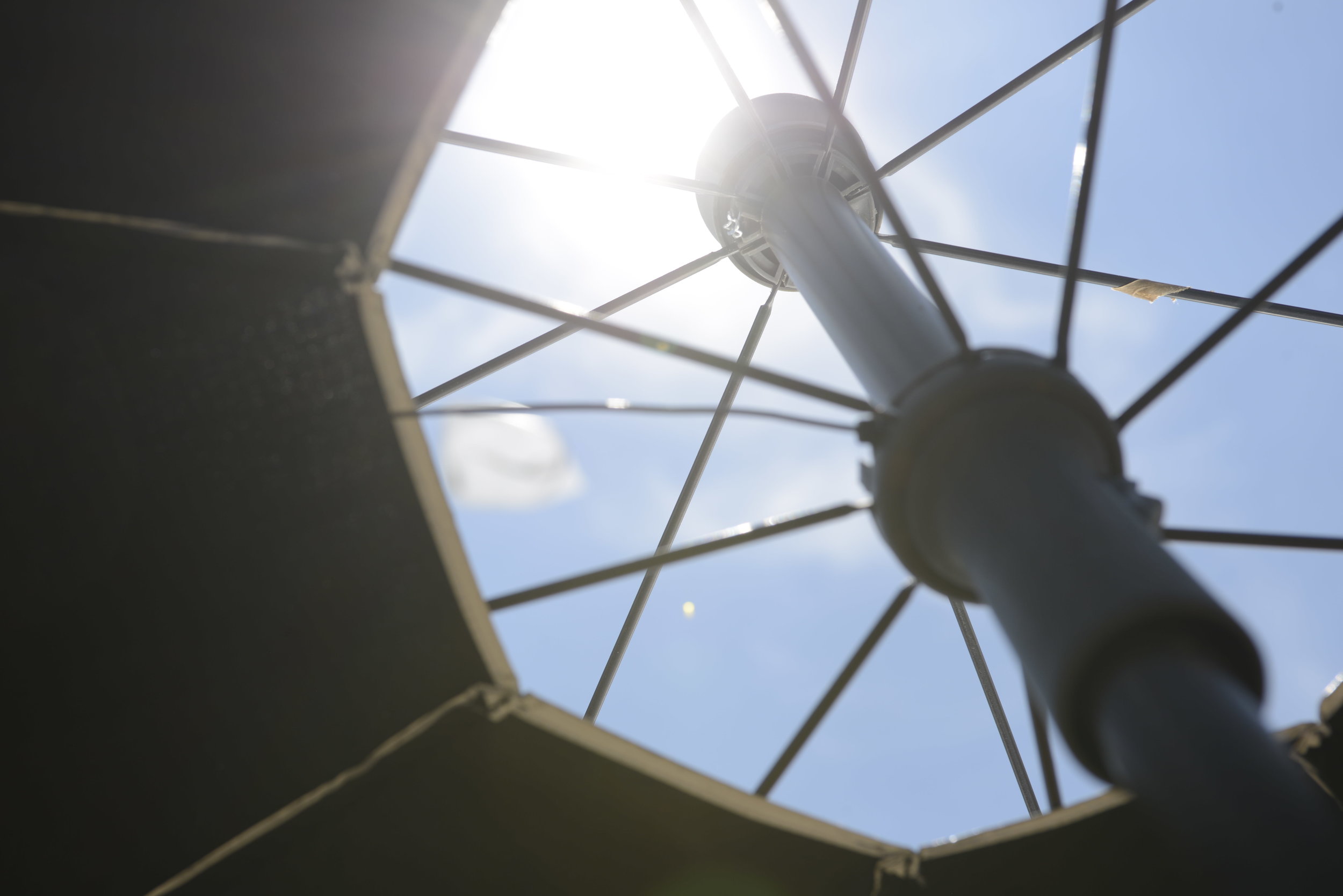
In this way amongst others, we devise new modes of sensitivity and reactivate a common imaginary towards achieving an ethical collaboration with the environment we find ourselves in every day, during this weekend a heightened presence in our lives. The rehearsal of an aerosolar around-the-world flight symbolises a new infrastructure which redefines an international right to mobility, and along with our community to reassess our connection to the earth, we hereby oppose the extractive approach developed by people towards the planet we inhabit. Instead, we call to re-examine the possibility of freedom of movement between countries, along with a reconnection between us and the elemental sources of energy, the sun and the planets. The dawn of this, the start of a new interplanetary ecology of interconnection between us all and the environment, can be sensed in moments like these, when we float with aerocene and re-acquaint ourselves with the power of the sun, beginning our journey towards the decolonisation of the air.
We re-acquaint ourselves with the power of the sun and we re-activate a common imaginary towards achieving an ethical collaboration with the environment. We find ourselves in every day, during this weekend a heightened physical presence in our lives. Within this, along with the rehearsal of an aerosolar around-the-world flight, we symbolise an imaginary new infrastructure which leaves behind the extractive approach people have adopted towards the earth, and re-assesses our connection to the earth and re-examines the possibility of free movement across the world as we move towards an interconnection between us and the elemental sources of energy, the sun and the planets, a new interplanetary ecology of practise in terms of oscillating harmony.

